Birds are considered one of the most fascinating species that the world has to offer. This group of vertebrates has become a vital part of the different ecosystems, often playing both predator and prey roles.
In Asia, their presence is just as prominent as it is in other parts of the world. From the snow-covered peaks of the Himalayas to the tropical forests of Southeast Asia, the continent boasts an impressive diversity of bird species that call it home.
Asia’s unique geography and climate have played a significant role in the evolution of these avian creatures, resulting in an intriguing array of adaptations and behaviors.
This article aims to provide an introduction to the rich birdlife present in the Asian region, exploring the diversity of species, their ecological importance, and the conservation efforts being made to protect them.
1. Phasianidae
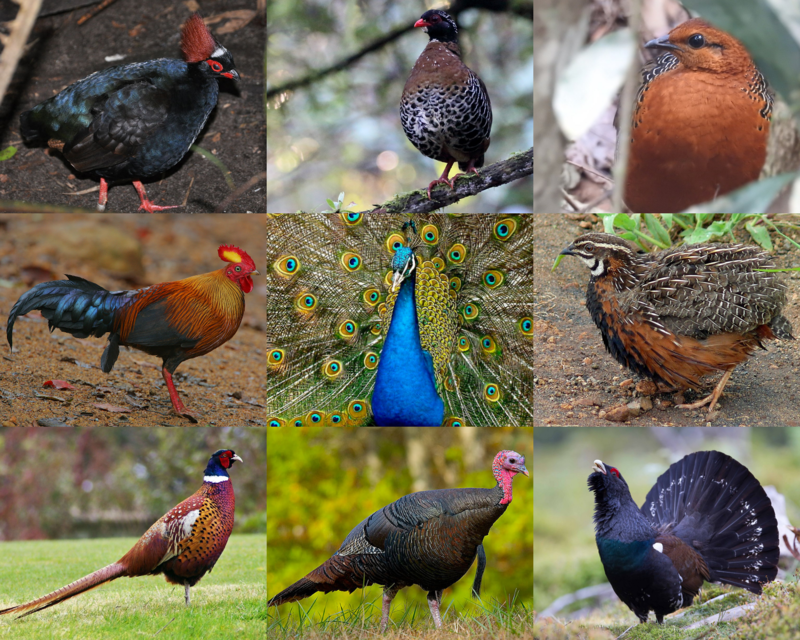
The Phasianidae family of birds is one that contains many popular gamebirds, with a total of 185 species divided across 54 genera.
These heavy ground-living birds include pheasants, partridges, junglefowl, chickens, and turkeys among others like Old World quail and peafowl.
This large family was formerly split into two subfamilies known as the Phasianinae and Perdicinae but this classification has since been changed to reflect more current scientific findings on them.
All these different types of birds have certain things in common such as their strong legs for scratching through leaves or soil looking for food items including insects, seeds, and other vegetation which makes up most of their diet.
They also all tend to be quite colorful in order to attract mates during breeding season when males will often display vibrant feathers or do dances around females in an attempt at courtship ritual displays.
The majority are monogamous creatures too although some may form short-term pair bonds before going off alone again once mating has taken place – either way.
There tends to be very little parental care given by adults after eggs have hatched so chicks need to fend for themselves right away.Scientific classification:
| Kingdom | Animalia |
| Phylum | Chordata |
| Class | Aves |
| Order | Galliformes |
| Superfamily | Phasianoidea |
| Family | Phasianidae Horsfield, 1821 |
Also Featured In: Most Common Birds in China, Turkey Birds You Should Know
2. Red-Crowned Crane
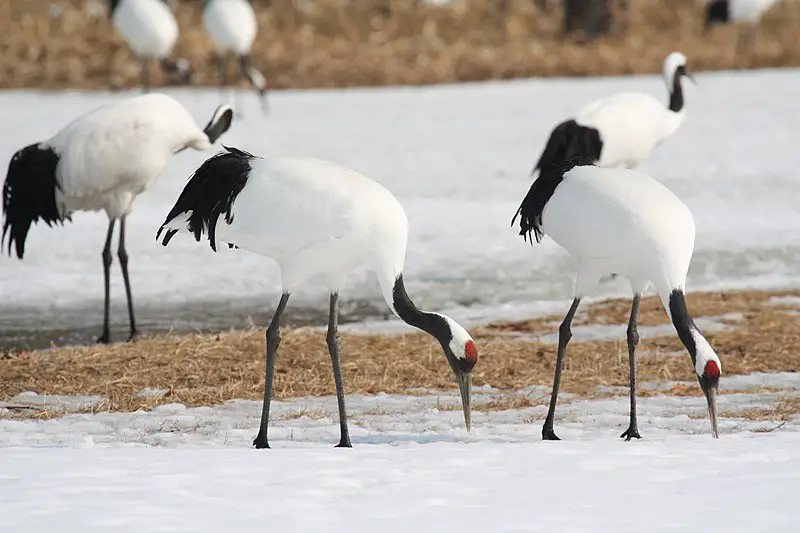
The Red-crowned Crane, also known as the Manchurian or Japanese crane, is a rare and majestic East Asian bird. It has striking red feathers on its head which give it an elegant crown look.
These cranes are large and can be seen in some parts of their range flying gracefully with slow wing beats. When they land to rest you may hear them making loud calls that carry across wide distances.
Not only do these birds have beautiful plumage but they also hold spiritual significance for many cultures throughout Asia where they are considered symbols of luck, loyalty and longevity.
With conservation efforts increasing more people will get to experience this amazing species.Scientific classification:
| Kingdom | Animalia |
| Phylum | Chordata |
| Class | Aves |
| Order | Gruiformes |
| Family | Gruidae |
| Genus | Grus |
| Species | G. japonensis |
Also Featured In: Birds You’ll Find in Hokkaido,
3. Chinese Grouse
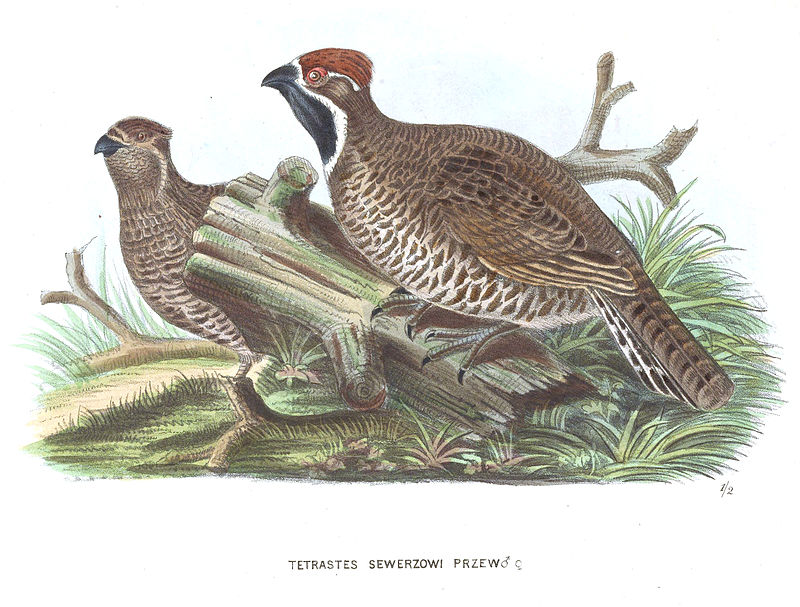
The Chinese grouse, also known as Severtzov’s or the black-breasted hazel grouse, is a close relative of the hazel grouse.
It lives in coniferous montane forests in central China and has less white coloring on its head and neck than its well-known counterpart.
The species was named after Russian zoologist Nikolai Severtzov who first described it during his travels to Central Asia between 1858 and 1865.
This sedentary bird feeds mainly on plants such as seeds, buds, leaves, twigs, berries and insects like beetles or caterpillars.
Its main predators are raptors including hawks and eagles which hunt for chicks but adults can escape by hiding under cover or flying off quickly when disturbed from their roosts at night.
Conservation efforts have been implemented through protected areas where these birds live but further protection measures should be taken to ensure their survival into future generationsScientific classification:
| Kingdom | Animalia |
| Phylum | Chordata |
| Class | Aves |
| Order | Galliformes |
| Family | Phasianidae |
| Genus | Tetrastes |
| Species | T. sewerzowi |
4. Bulbul
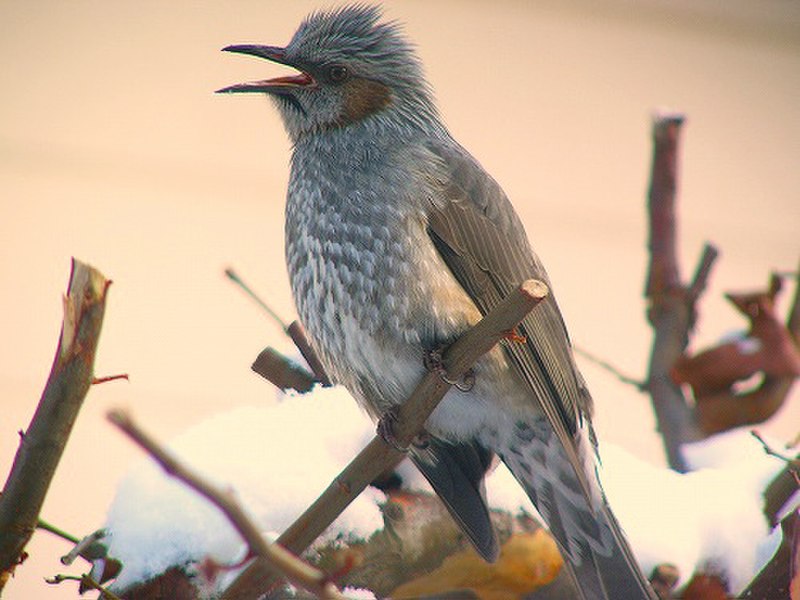
Bulbuls are a medium-sized passerine songbird family native to Africa, the Middle East and tropical Asia up until Japan. They can also be found on some of the Indian Ocean islands.
There are 160 species within 32 genera in this family which includes greenbuls, brownbuls, leafloves and bristlebills.
Bulbul birds have been known for their beautiful singing voices as well as for being very active during mating season when they gather together to create large flocks where potential mates can show off their skills.
The coloration of bulbuls range from dull greys or browns to vibrant yellows with black markings around the head region making them quite attractive creatures indeed.Scientific classification:
| Kingdom | Animalia |
| Phylum | Chordata |
| Class | Aves |
| Order | Passeriformes |
| Parvorder | Sylviida |
| Family | Pycnonotidae Gray, GR, 1840 |
Also Featured In: Common Birds in India, Birds That Live in Iraq
5. Black-Necked Crane
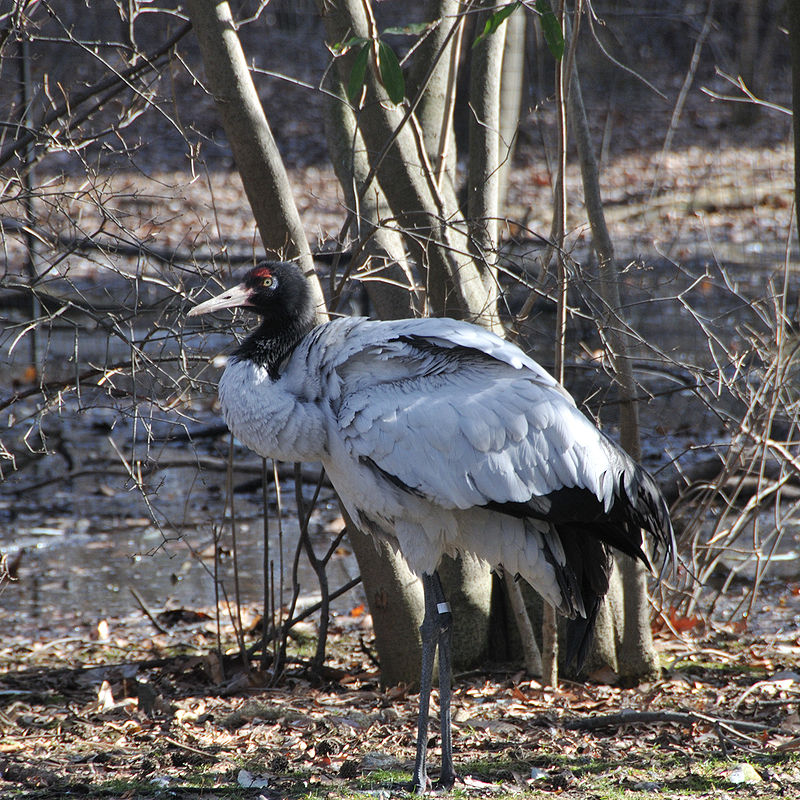
The Black-necked Crane is a majestic bird found in Asia. It has an impressive wingspan of 235cm and stands up to 139 cm tall.
Its feathers are whitish grey with beautiful black markings – head, neck and legs as well as the primaries and secondaries on its wings.
The white patch towards the back of its eye adds to their distinctiveness making them easily recognizable.
They can be seen flying gracefully over Tibet Plateau, India or Bhutan where they breed during summer months before migrating southwards for wintering grounds closer to sea level areas like Assam Valley in North East India.Scientific classification:
| Kingdom | Animalia |
| Phylum | Chordata |
| Class | Aves |
| Order | Gruiformes |
| Family | Gruidae |
| Genus | Grus |
| Species | G. nigricollis |
Also Featured In: Birds of Ladakh, Birds that Commonly Found in Andhra Pradesh
6. Songbirds
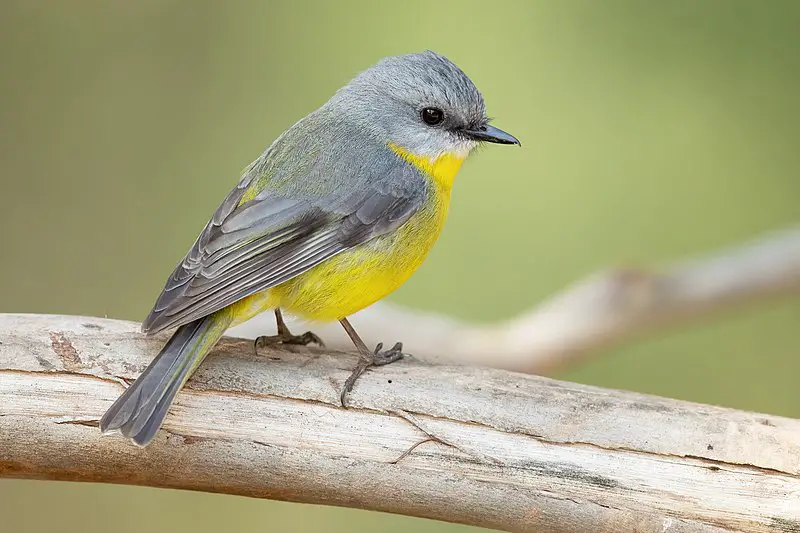
Songbirds are a special suborder of perching birds found all over the world. These beautiful creatures have intricate vocal organs that allow them to produce elaborate bird songs, making them stand out from other species.
With around 5,000 different types of songbird in existence, they come in various sizes and colors with complex feathers adding to their beauty.
Songbirds play an important role in eco-systems as they help disperse seeds by eating fruit and insects which act as agents for pollination.
Their presence also serves to attract more biodiversity into areas where these delicate animals live, creating vibrant habitats full of life.Scientific classification:
| Kingdom | Animalia |
| Phylum | Chordata |
| Class | Aves |
| Order | Passeriformes |
| Clade | Eupasseres |
| Suborder | Passeri Linnaeus, 1758 |
Also Featured In: Most Common United States Birds, Most Common Winter Birds
7. Peregrine Falcon
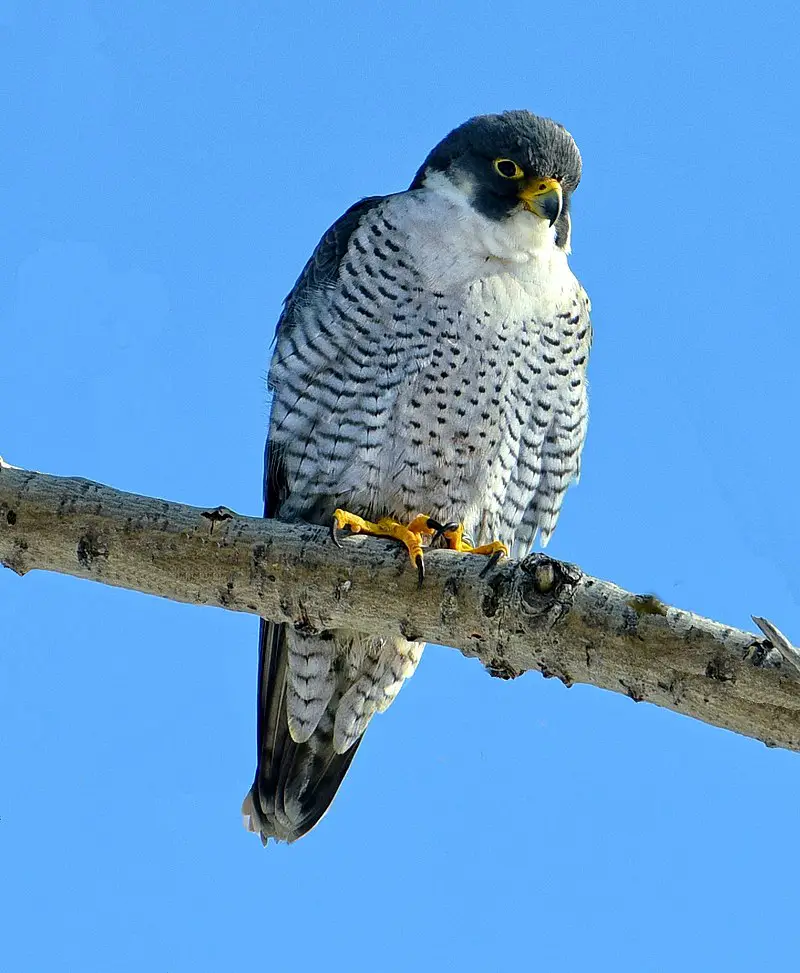
The Peregrine Falcon is a majestic bird of prey belonging to the family Falconidae. It has a blue-grey back, barred white underparts and black head making it easily recognizable.
This intelligent raptor is known for its incredible speed reaching over 320 km/h (200 mph) during hunting dives – one of the fastest animals in existence.
The peregrine falcon can be found around the world from Arctic tundra to tropical rainforests thriving with humans or in high alpine mountains far away from civilization.
With their beauty, power and adaptability they are an impressive species that have earned respect among many cultures throughout history as symbols of strength and endurance.Scientific classification:
| Kingdom | Animalia |
| Phylum | Chordata |
| Class | Aves |
| Order | Falconiformes |
| Family | Falconidae |
| Genus | Falco |
| Species | F. peregrinus |
Also Featured In: Birds of Sweden, Birds that Live in the Deserts
8. House Sparrow
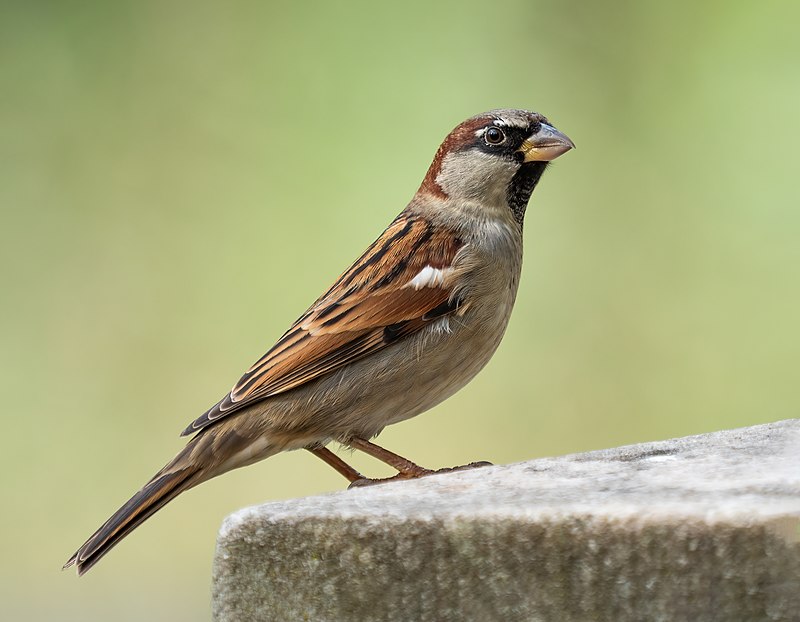
The house sparrow is a small bird of the Passeridae family. It has an average length of 16 cm and weighs 24-39.5 gm.
Females have dull brown and grey plumage, whereas males are brighter, with black, white and brown markings on their wings and back feathers.
This species is one among 25 different kinds in its genus Passer .These birds are found all around the world mainly near human dwellings where they feed off food scraps from garbage bins or gardens etc..
They also make nests close to houses which makes them even more visible to people living nearby.
House sparrows can be seen hopping around yards looking for food during daytime hours but usually hide in colonies at night time.Scientific classification:
| Kingdom | Animalia |
| Phylum | Chordata |
| Class | Aves |
| Order | Passeriformes |
| Family | Passeridae |
| Genus | Passer |
| Species | P. domesticus |
Also Featured In: Birds for Your Home Garden, Most Common Songs Birds that Live around You
9. Bee-Eater
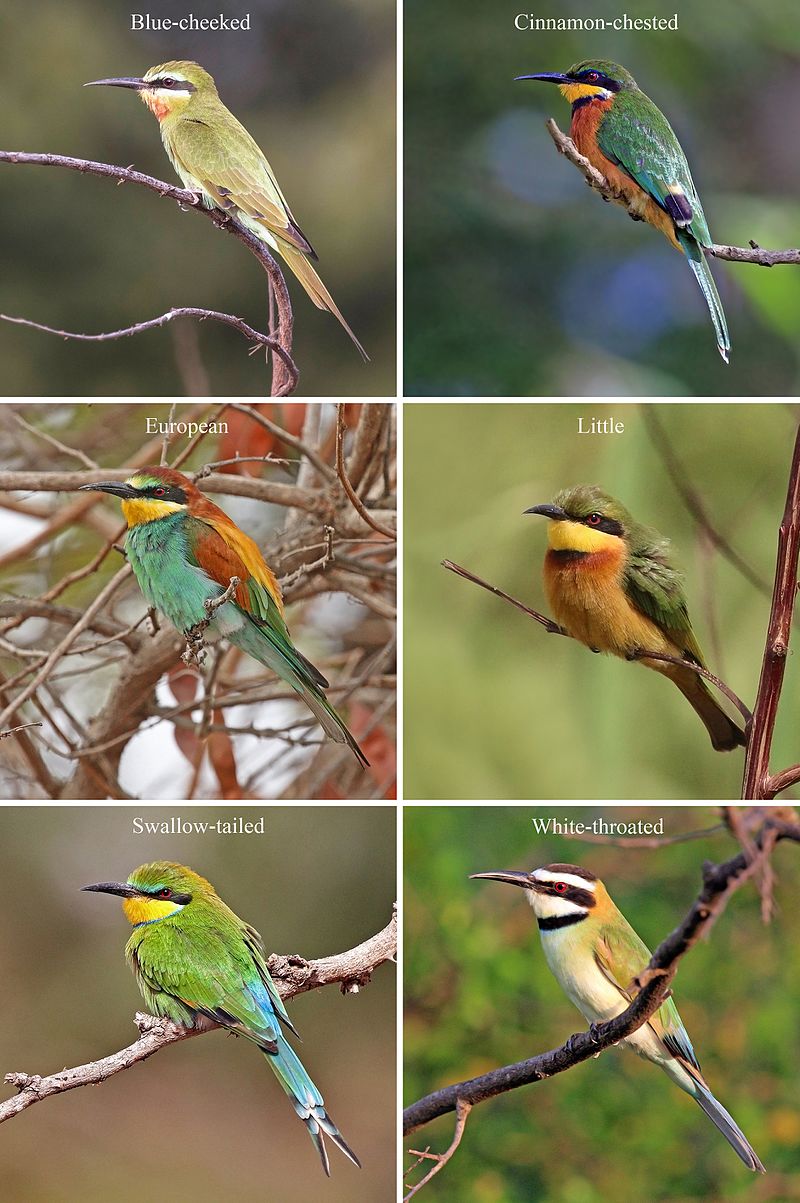
Bee-eaters are one of the most beautiful and vibrant birds in existence. They have a slender body, long wings, down turned bills and their signature elongated central tail feathers which make them instantly recognizable from afar.
Their plumage is incredibly colorful with many shades ranging from blues to greens to reds that glisten when they fly through the air.
These stunning creatures can be found all over Africa, Asia, Southern Europe, Australia and New Guinea where they feed mainly on bees but also other insects like flies or wasps as well as small mammals such as lizards or rodents.
Bee-eaters live in colonies near rivers or wetlands so that they may easily hunt for food while staying close together for safety purposes.
Additionally it allows them to better display their impressive courtship dances during mating season.Scientific classification:
| Kingdom | Animalia |
| Phylum | Chordata |
| Class | Aves |
| Order | Coraciiformes |
| Family | Meropidae Rafinesque, 1815 |
Also Featured In: Common Nigerian Birds, Common Algerian Birds
10. Common Myna
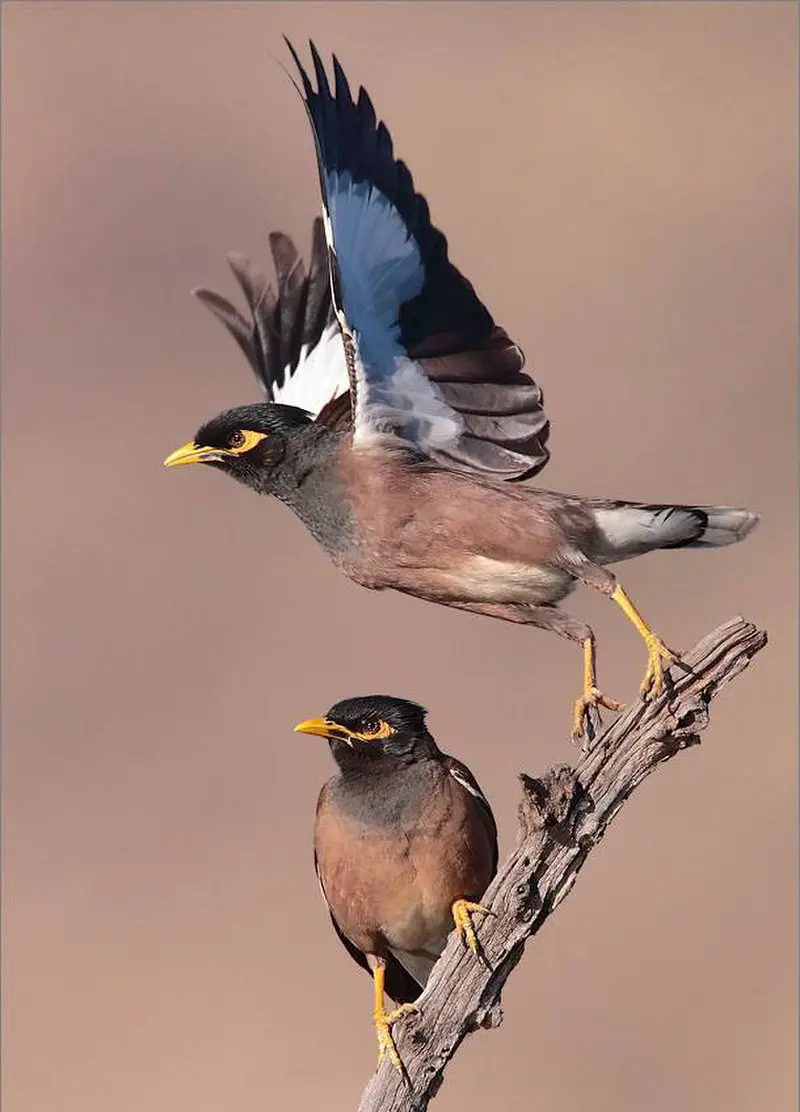
The Common myna is a bird native to Asia and belongs to the Sturnidae family. It has an omnivorous diet, strong territorial instinct and is well adapted to urban environments.
With its range increasing rapidly, it was declared one of the most invasive species by IUCN in 2000. Its distinctive features include black head with a yellow bill, brown body and white tips on wings & tail feathers.
The common myna communicates through loud clicking noises that can easily be heard from long distances in both rural as well as urban areas alike.
They are known for their intelligence; they mimic sounds such as human speech or other birds’ calls making them popular pets among households too.Scientific classification:
| Kingdom | Animalia |
| Phylum | Chordata |
| Class | Aves |
| Order | Passeriformes |
| Family | Sturnidae |
| Genus | Acridotheres |
| Species | A. tristis |
Also Featured In: Most Common Types of Bangladeshi Birds, Birds of Kauai, Hawaii
11. Black Drongo

The Black Drongo is a small passerine bird of the Dicruridae family, commonly found in tropical southern Asia from Iran through India and Bangladesh to Indonesia.
It has an all black plumage and distinctive forked tail measuring 28 cm long. This omnivorous species feeds on insects such as flies, bees, beetles and moths; it also consumes fruit juices during summer months.
The nest can be built anywhere including open fields or near houses made up of twigs with a cup-shaped inner lining using grasses & hair filled with feathers & cobwebs.
During breeding season they are known to perform aerial acrobatics while chasing away any intruders who come too close to their nests.Scientific classification:
| Kingdom | Animalia |
| Phylum | Chordata |
| Class | Aves |
| Order | Passeriformes |
| Family | Dicruridae |
| Genus | Dicrurus |
| Species | D. macrocercus |
Also Featured In: Delhi Birds You Need to See, Pet Birds that Live in India
12. Hooded Crane
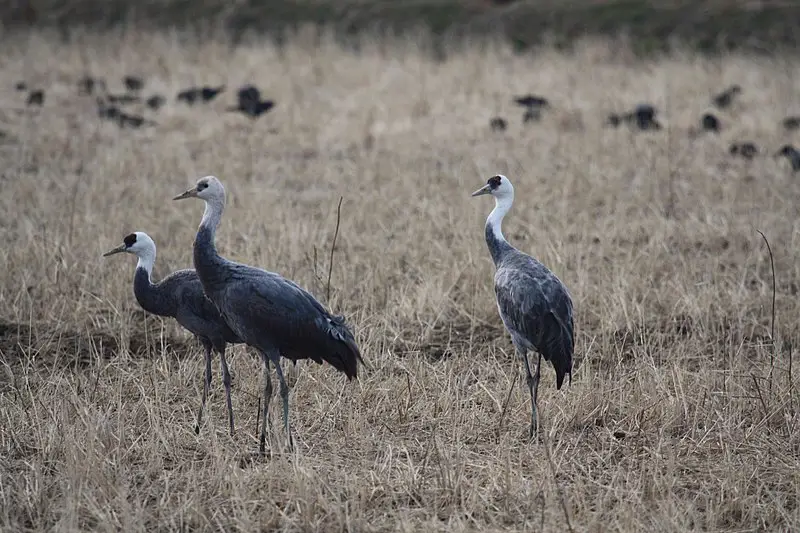
The Hooded Crane is a beautiful bird native to East Asia and commonly seen migrating through Japan. It has distinctive grey plumage, with a white neck and head except for the bare red skin patch above its eye.
This species of crane stands at an impressive 1 metre in length, weighing 3.7 kilos with wingspan measuring up to 1.87 metres – making it one of the smallest cranes around.
During breeding season they inhabit southern parts of Siberia and northern China where they can be heard singing their courtship songs while dancing together gracefully on wetlands or marshes nearby.
The Hooded Crane is truly an amazing sight; if you are lucky enough, keep your eyes peeled during migration periods as this stunning bird may just fly right past you.Scientific classification:
| Kingdom | Animalia |
| Phylum | Chordata |
| Class | Aves |
| Order | Gruiformes |
| Family | Gruidae |
| Genus | Grus |
| Species | G. monacha |
Also Featured In: Common Birds in Japan,
13. White-Eyes

White-eyes are small passerine birds found in a variety of tropical, subtropical and temperate environments.
They inhabit most islands in the Indian Ocean, western Pacific Ocean and Gulf of Guinea.
The family Zosteropidae includes many species which are endemic to single islands or archipelagos – they can’t be seen anywhere else on Earth.
White-eyes have distinctive white feathers around their eyes giving them their name, while some also feature yellow plumage or bright red patches at the throat.
These pretty little birds feed mainly on insects such as beetles and caterpillars but will also eat nectar when available.
With their friendly nature, white-eyes make great garden visitors who often come close enough for you to watch up close with binoculars.Scientific classification:
| Kingdom | Animalia |
| Phylum | Chordata |
| Class | Aves |
| Order | Passeriformes |
| Superfamily | Sylvioidea |
| Family | Zosteropidae Bonaparte, 1853 |
Also Featured In: Guam Birds You Need to See, Birds that Live in Kangaroo Island
14. Frogmouth
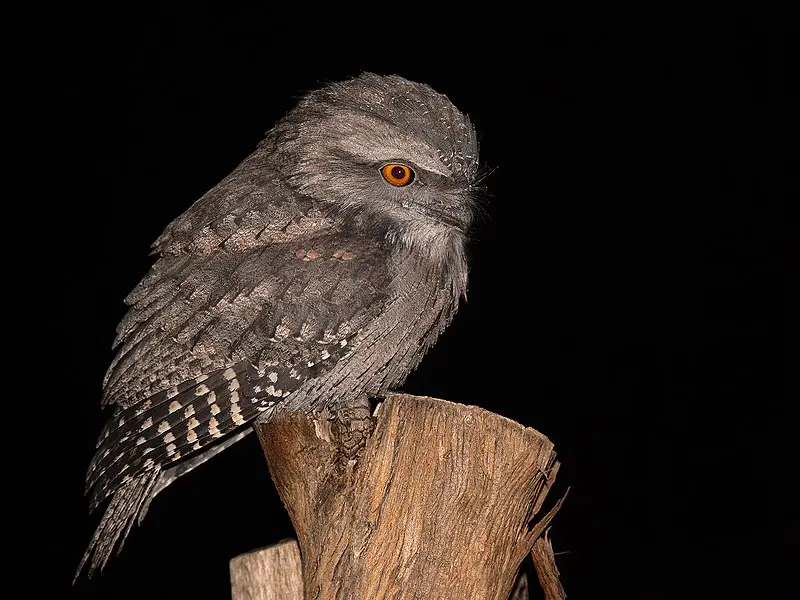
The Frogmouth is a nocturnal bird that belongs to the same family as owlet-nightjars, swifts and hummingbirds.
They have large flattened hooked bills with huge frog-like gape which helps them capture insects during night time.
Three species of Podargus are found in Australia and New Guinea only – they have massive eyes that allow for excellent night vision.
Their bodies are generally grey or brownish in colour with cryptic markings for camouflage when roosting during day light hours.
Generally known as quiet birds, their loud wailing call can be heard at dusk or dawn near river banks or wetlands where they live alone or form pairs throughout breeding season.
The diet of these fascinating creatures consists mainly of flying insects such as moths, beetles & cicadas etc., but on occasion will consume small vertebrates like lizards and frogs too.Scientific classification:
| Kingdom | Animalia |
| Phylum | Chordata |
| Class | Aves |
| Clade | Strisores |
| Order | Podargiformes Matthews, 1918 |
| Family | Podargidae Gray, 1847 |
Also Featured In: Birds of the Philippines, Birds that Charles Darwin Studied
15. Pittas
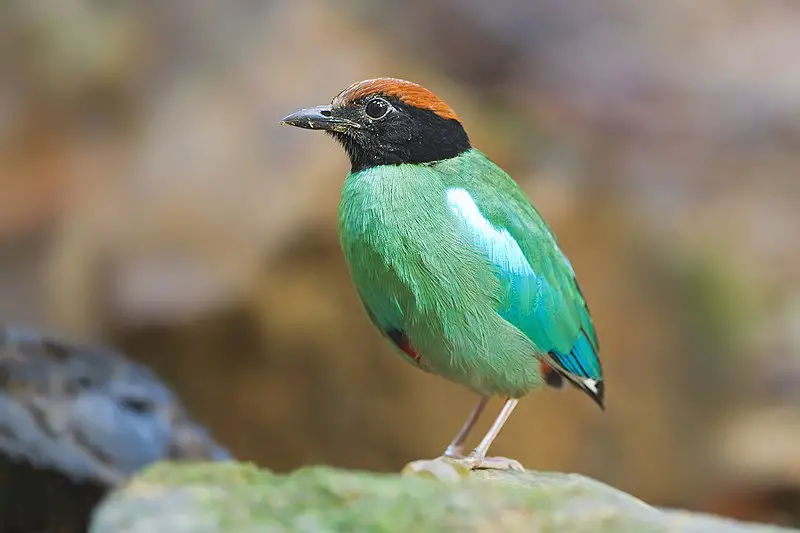
Pittas are a family of passerine birds known for their vibrant colors and unique appearance. They can be found in Asia, Australasia and Africa with around 40 to 42 species existing today.
These Old World suboscines have closest relatives among other bird genera such as Smithornis and Calyptomena.
Pittas inhabit tropical forests where they hop from branch to branch searching for insects or worms on the ground below them.
Their feathers are stunningly colored with combinations of blue, green, copper, purple or even yellow making them stand out amongst others in the forest canopy.Scientific classification:
| Kingdom | Animalia |
| Phylum | Chordata |
| Class | Aves |
| Order | Passeriformes |
| Suborder | Tyranni |
| Infraorder | Eurylaimides |
| Superfamily | Pittoidea |
| Family | Pittidae Authority disputed.[a] |
Also Featured In: Queensland Birds You Should Know, Birds of Goa
16. Leafbird
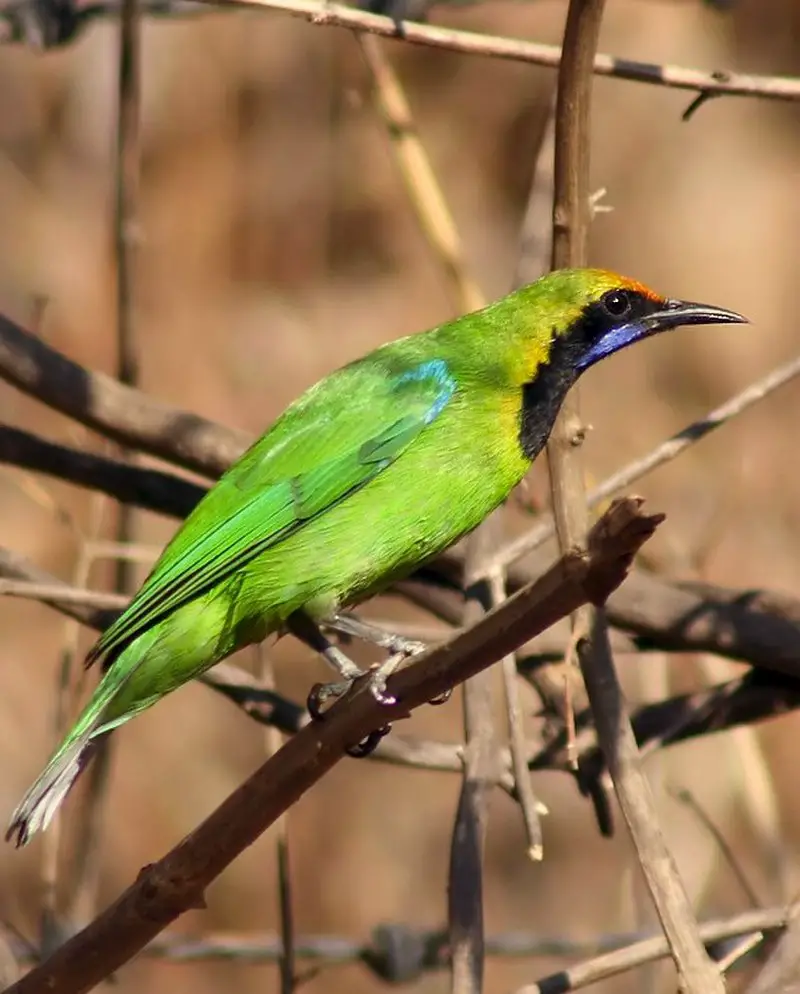
Leafbirds are small passerine birds found in the Indian Subcontinent and Southeast Asia. They range from 14 to 21 cm, with a weight of about 19-40 grams.
Leafbirds have bright colours such as green, blue and yellow on their head, throat and wings which make them stand out among other species. The males typically have brighter colouration than females.
Their diet consists mainly of fruits but they also eat insects occasionally. These birds live in pairs or family groups that share territories year round while migrating during winter months to warmer climates for breeding purposes.
Although leafbird populations remain stable across much of its habitat, these birds are threatened by deforestation due to urbanization and agricultural expansion leading to loss of suitable nesting sites causing decline in population numbers throughout certain areas within their rangeScientific classification:
| Kingdom | Animalia |
| Phylum | Chordata |
| Class | Aves |
| Order | Passeriformes |
| Family | Chloropseidae Wetmore, 1960 |
| Genus | Chloropsis Jardine & Selby, 1827 |
Also Featured In: Birds that Found in Sumatra,
17. Egyptian Vulture
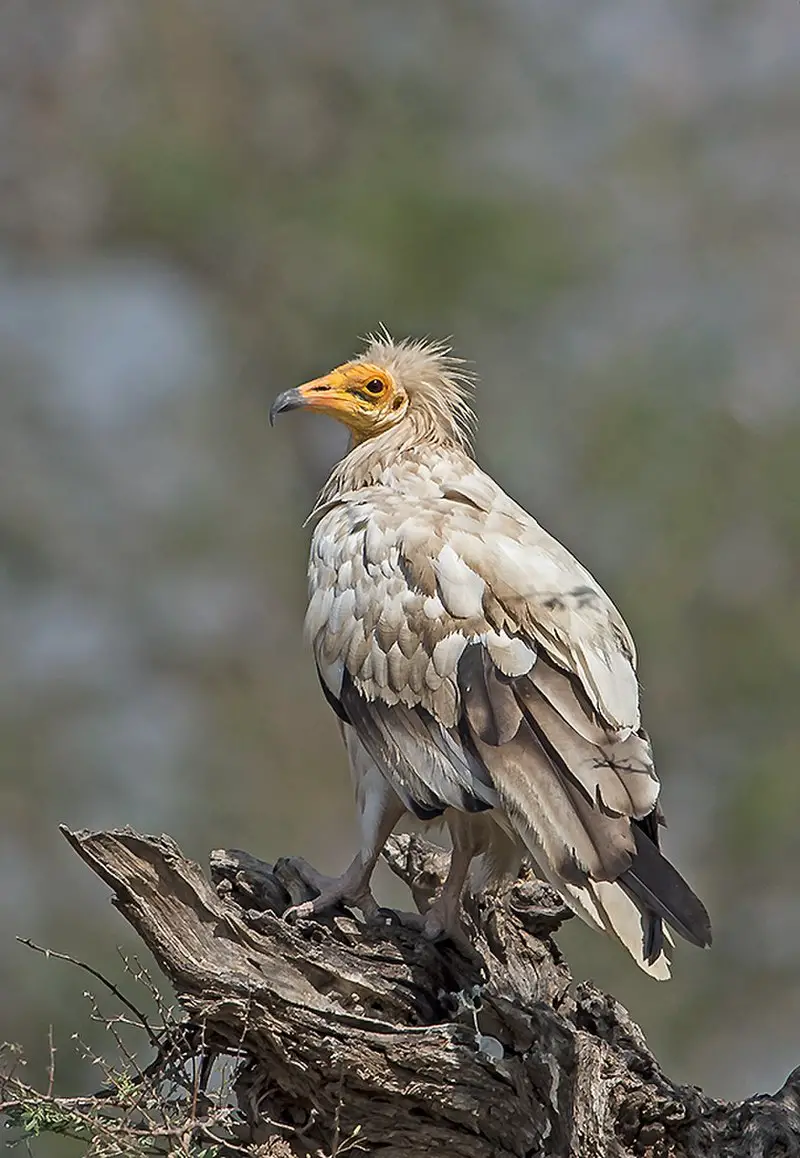
The Egyptian Vulture is a small Old World vulture known for its distinctive wedge-shaped tail and contrasting underwing pattern.
It has been found from the Iberian Peninsula through North Africa to India, making it one of the most widespread birds in that area.
This species eats mostly carrion but will also feed on eggs and small prey if they can find them. Its diet consists mainly of lizards, insects and other invertebrates as well as fruit like figs, grapes or mulberries when available.
The Egyptian Vulture plays an important role in ecosystems by helping to clean up carcasses which could otherwise spread disease or attract predators such as jackals into human settlements.
They are considered vulnerable due to threats including habitat destruction, electrocution from power lines and accidental poisoning – all factors contributing towards their decline in numbers across their rangeScientific classification:
| Kingdom | Animalia |
| Phylum | Chordata |
| Class | Aves |
| Order | Accipitriformes |
| Family | Accipitridae |
| Genus | Neophron Savigny, 1809 |
| Species | N. percnopterus |
Also Featured In: Egyptian Birds, Birds You’ll Find in Albania
18. Cattle Egret
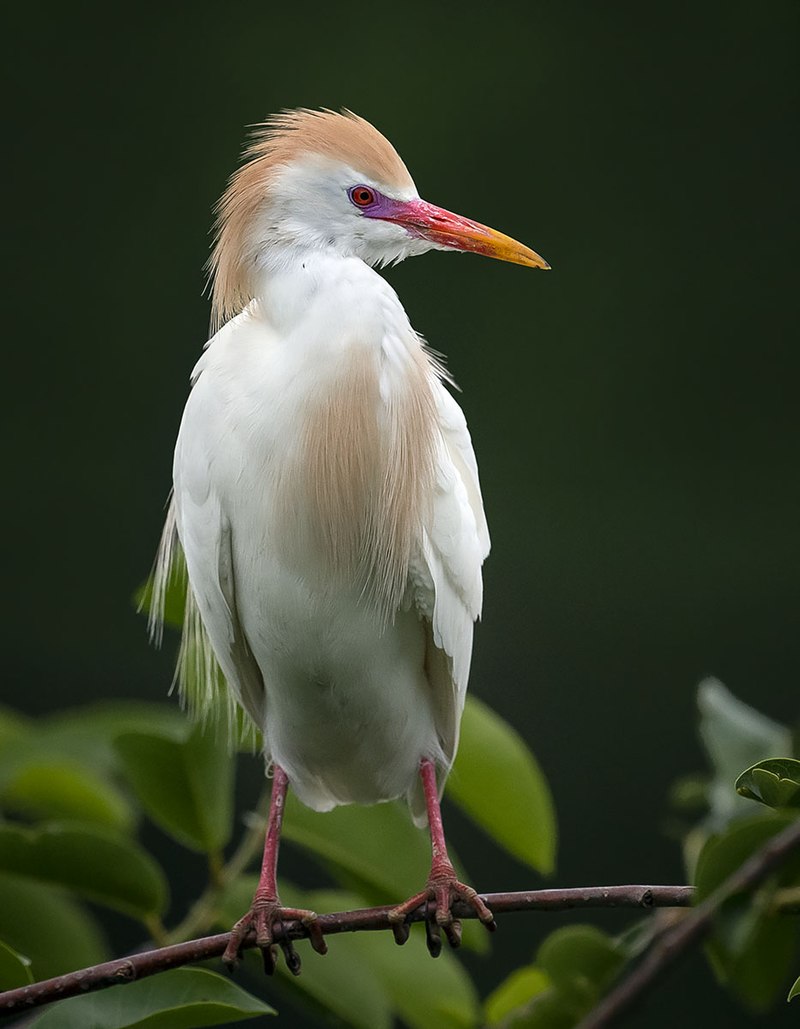
The Cattle Egret is a heron of the family Ardeidae found around the world in tropical, subtropical and warm temperate areas. It has two subspecies: western cattle egret and eastern cattle egret.
They have white plumage with buff plumes on their head, neck and back. The beak is yellowish-orange with black tip while legs are orange or yellow coloured depending on species variation.
This bird usually feeds near large herds of animals such as cows, horses etc., where it finds plenty of insects to eat like grasshoppers, crickets etc..
Its presence benefits these animals by removing ectoparasites from them which leads to healthier livestock population.
It nests colonially in trees or shrubs located close to water bodies during breeding season which generally takes place between March-June every year.Scientific classification:
| Kingdom | Animalia |
| Phylum | Chordata |
| Class | Aves |
| Order | Pelecaniformes |
| Family | Ardeidae |
| Genus | Bubulcus Bonaparte, 1855 |
| Species | B. ibis |
Also Featured In: Water Birds Live around Us, Most Common Spain Birds
19. European Roller
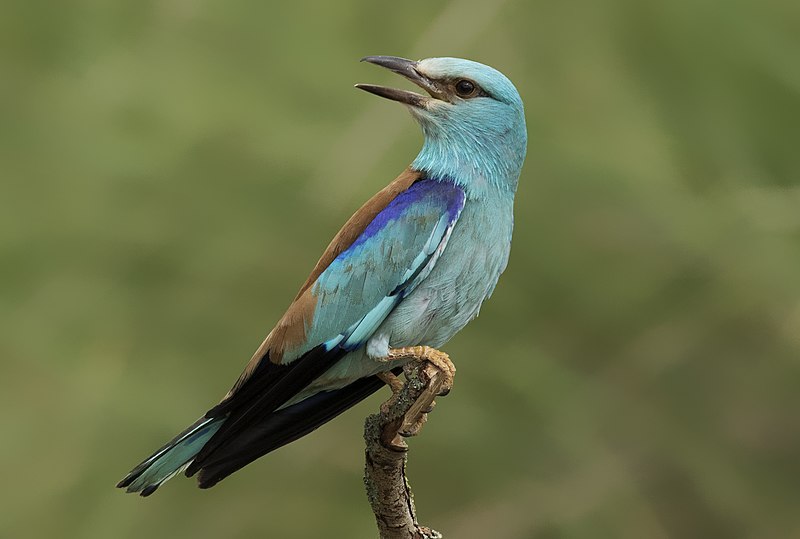
The European roller is a beautiful bird belonging to the Coracias family, and it’s the only one of its kind found in Europe.
It inhabits various habitats such as dry wooded savanna, bushy plains and other areas except for treeless ones.
During wintertime they usually nest in tree holes, while their range extends into Middle East, Central Asia and Maghreb regions.
They have vibrant blue feathers with black stripes along the neck area which makes them stand out from other birds easily.
Its diet consists mainly of insects like grasshoppers or beetles that are hunted by catching them mid-air during flight; this feature adds an extra charm to these magnificent creatures.Scientific classification:
| Kingdom | Animalia |
| Phylum | Chordata |
| Class | Aves |
| Order | Coraciiformes |
| Family | Coraciidae |
| Genus | Coracias |
| Species | C. garrulus |
Also Featured In: Ukrainian Birds You Should Know, Native Birds of Kazakhstan
20. Common Cuckoo
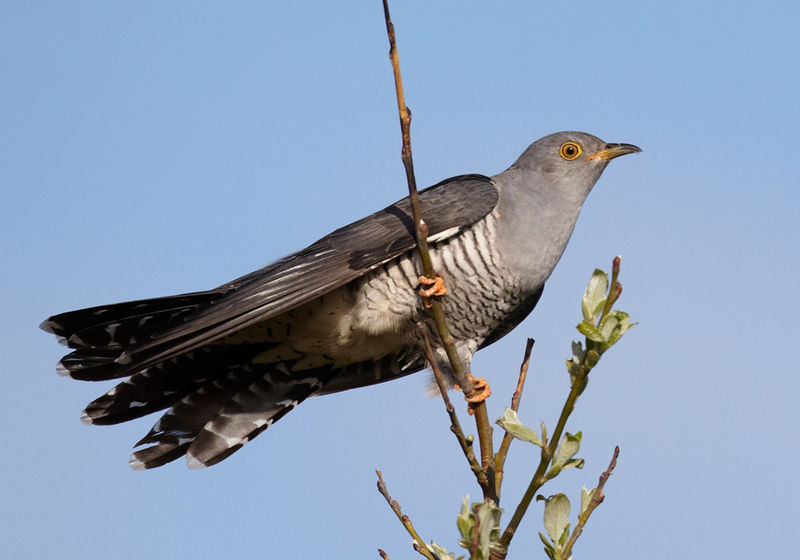
The Common Cuckoo is a medium sized bird belonging to the cuckoo family. It is found in Europe and Asia during summers, migrating to Africa for wintering.
This species has adapted an interesting lifestyle of being a brood parasite – it lays its eggs in other birds’ nests most often that of dunnocks, meadow pipits and reed warblers.
The host bird then incubates the egg as if it were their own which hatches earlier than any other chicks present there thus gaining more attention from the parent birds resulting in better growth rate for Common Cuckoo chicks who are bigger than even their hosts.Scientific classification:
| Kingdom | Animalia |
| Phylum | Chordata |
| Class | Aves |
| Order | Cuculiformes |
| Family | Cuculidae |
| Genus | Cuculus |
| Species | C. canorus |
Also Featured In: Native Birds Of Germany, Belarus Birds You Should Know
21. Eurasian Curlew
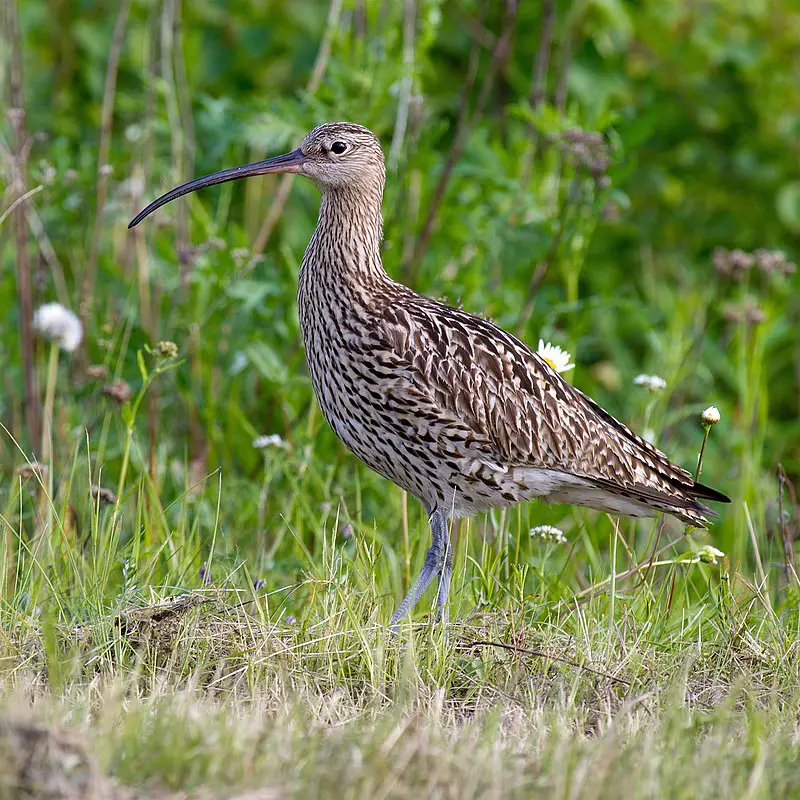
The Eurasian curlew is a wader bird belonging to the Scolopacidae family. It has an incredibly wide range, breeding across temperate Europe and Asia. This species can be easily identified by its long, curved bill and distinctive white underparts.
The male’s head typically appears striped while the female’s tends to be mottled brown in coloration with dark streaks on her neck and breast feathers.
With wingspans of almost two feet, these birds are quite large compared to other members of their genus.
Despite being so widespread they remain vulnerable due to ongoing habitat loss or degradation as well as hunting practices along migration routes or during wintering grounds visits.Scientific classification:
| Kingdom | Animalia |
| Phylum | Chordata |
| Class | Aves |
| Order | Charadriiformes |
| Family | Scolopacidae |
| Genus | Numenius |
| Species | N. arquata |
Also Featured In: Most Common Lithuanian Birds, European Birds
22. Common Buzzard
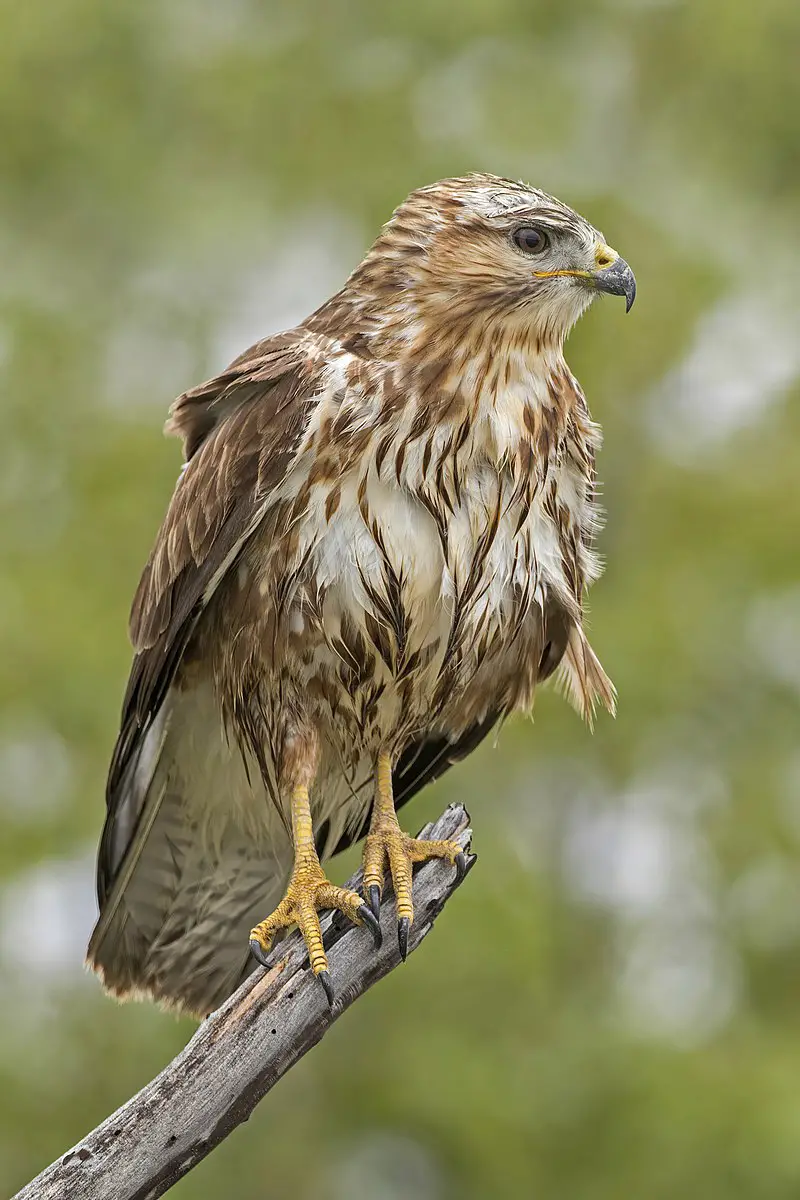
The common buzzard is a large bird of prey found across much of Europe, the Palearctic region and parts of Asia. This species has medium to dark brown plumage with lighter streaks on its body.
It has broad wings which are useful for soaring high in search of food such as small rodents, lizards, amphibians and insects.
Buzzards often hunt from a perch or while hovering above open areas like fields and meadows where they can easily spot their prey below.
They also take advantage of thermals rising up from warm ground during hot summer days to gain altitude without expending energy flapping their wings.
In addition to hunting alone, these birds will sometimes join forces with others when scavenging carrion or chasing away predators that threaten their nests full of eggs or young chicksScientific classification:
| Kingdom | Animalia |
| Phylum | Chordata |
| Class | Aves |
| Order | Accipitriformes |
| Family | Accipitridae |
| Genus | Buteo |
| Species | B. buteo |
Also Featured In: Birds of United Kingdom, Most Common Scotland Birds
23. Hawfinch
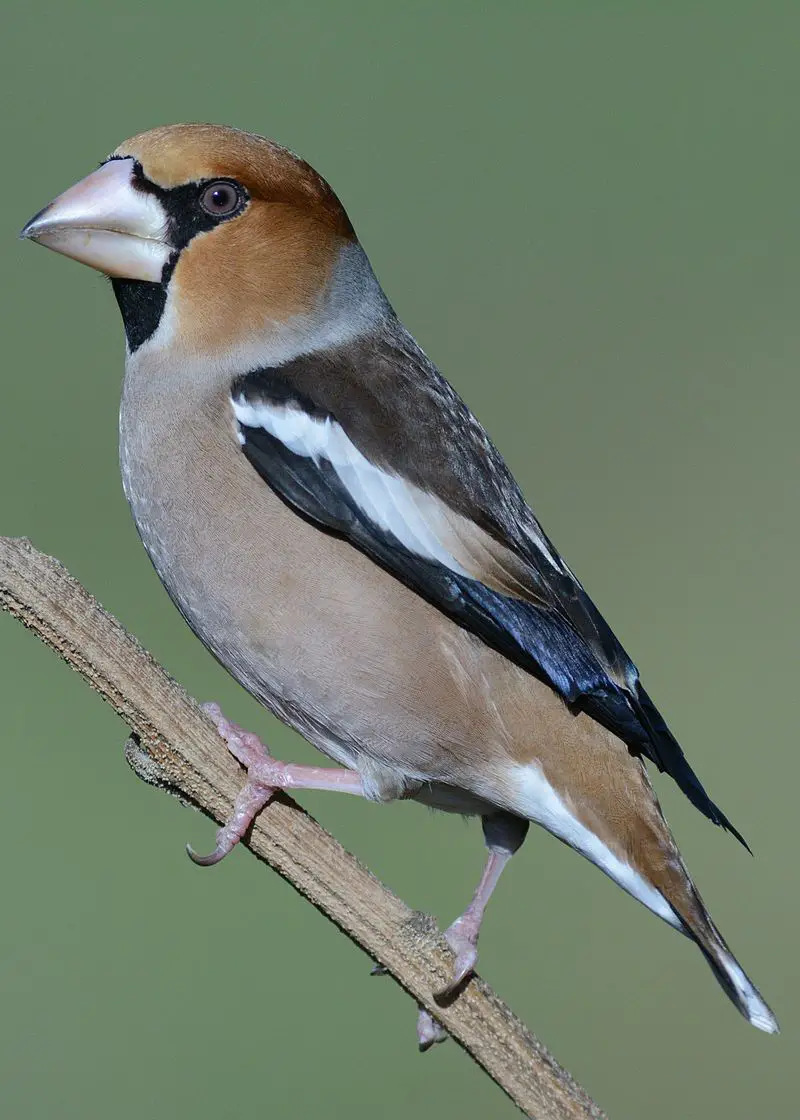
The Hawfinch is a stunning passerine bird of the finch family. It lives in Europe, North Africa, and parts of Asia and stands out for its large size amongst other members of its family.
Its most recognizable feature is its bulky bill which it uses to crack open hard nuts like hazelnuts and cherry stones.
The male has bright pinkish-red underparts while the female’s are more dull browns or greys.
Both sexes also have distinctive black wings with white patches towards their tips. Their closest living relatives are found across East Asia as well as some species in both North America and Canada.
These smart birds often gather together in small flocks during wintertime when food sources become scarce making them much easier to spot.Scientific classification:
| Kingdom | Animalia |
| Phylum | Chordata |
| Class | Aves |
| Order | Passeriformes |
| Family | Fringillidae |
| Subfamily | Carduelinae |
| Genus | Coccothraustes Brisson, 1760 |
| Species | C. coccothraustes |
Also Featured In: Most common Birds in France, Common Slovakian Birds
24. Mute Swan
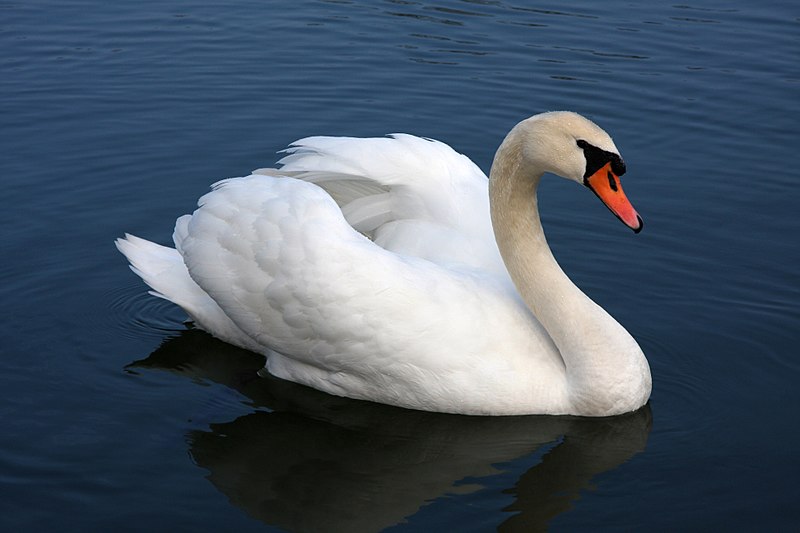
The Mute Swan is a species of swan belonging to the waterfowl family Anatidae. It can be found in much of Eurosiberia, as well as North America, Australasia and southern Africa where it has been introduced.
The ‘mute’ part of its name comes from its soft call which is more muffled than that of other swans.
They have an almost entirely white plumage with black legs and feet and an orange bill with a distinctive knob at the base.
These striking birds are large in size reaching up to 1 metre tall when fully grown with wingspans reaching 3 metres or more.
In flight they hold their necks arched gracefully above their body while beating powerful wings slowly through the air – creating quite a spectacle.Scientific classification:
| Kingdom | Animalia |
| Phylum | Chordata |
| Class | Aves |
| Order | Anseriformes |
| Family | Anatidae |
| Genus | Cygnus |
| Species | C. olor |
Also Featured In: Tundra Birds, Large Birds of Michigan
25. Hornbill
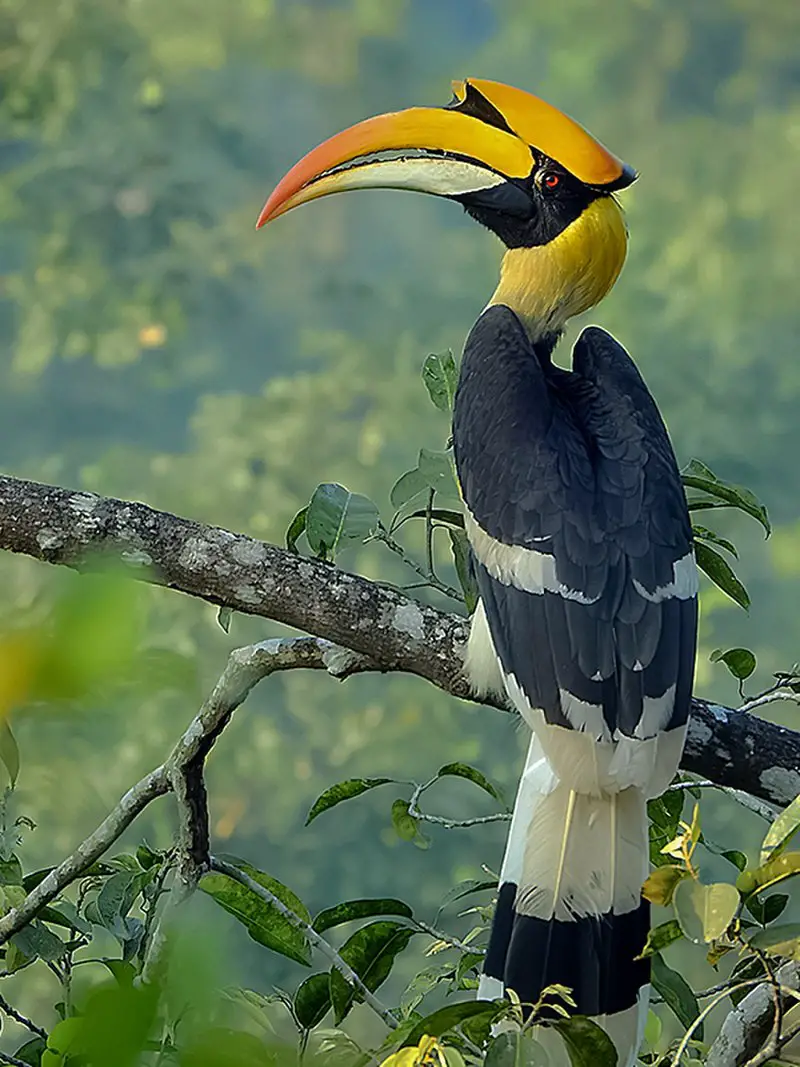
Hornbills are a tropical and subtropical bird species with characteristic long, curved bills. Their English and scientific names both refer to the shape of their bill which resembles that of a cow’s horn.
They have strong beaks for cracking open hard-shelled fruits as well as powerful wings for flying between trees or over great distances in search of food or mates.
Hornbills also feature beautiful plumage ranging from white to black feathers with yellow, brown, red and blue accents on the head, neck and back areas depending on the species.
In addition they often display brightly coloured casques – helmet like structures – atop their upper mandible adding further visual appeal to these majestic birds.Scientific classification:
| Kingdom | Animalia |
| Phylum | Chordata |
| Class | Aves |
| Order | Bucerotiformes |
| Family | Bucerotidae Rafinesque, 1815 |
Also Featured In: Birds of South African, Birds That Live in the Jungle
26. Cinereous Vulture
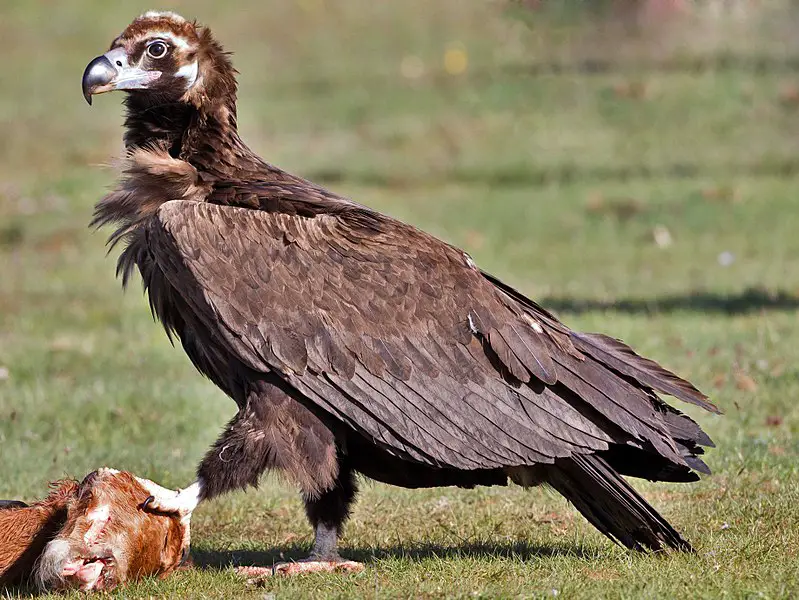
The cinereous vulture, also known as the black vulture, monk vulture and Eurasian black vuture is a large raptor found in temperate Eurasia. It has an impressive wingspan of 3.1 metres (10 feet) with a body length of 1.2 metres (3 ft 11in).
They are the largest Old World Vultures and can reach weights up to 14 kilograms(31 lbs).
Their diet consists mainly of carrion but they have been recorded taking live prey such as rodents or hares which allows them to search for food over wide areas quickly.
These birds usually hunt alone during daylight hours due their eyesight being well adapted at picking out carcasses from far away distances while soaring high in the sky above open grasslands or wooded hillsides where they breed seasonally between late winter and early autumn typically laying one egg per pair each year.Scientific classification:
| Kingdom | Animalia |
| Phylum | Chordata |
| Class | Aves |
| Order | Accipitriformes |
| Family | Accipitridae |
| Genus | Aegypius |
| Species | A. monachus |
Also Featured In: Native South Korean Birds, Armenian Birds You Should Know
27. Vireonidae
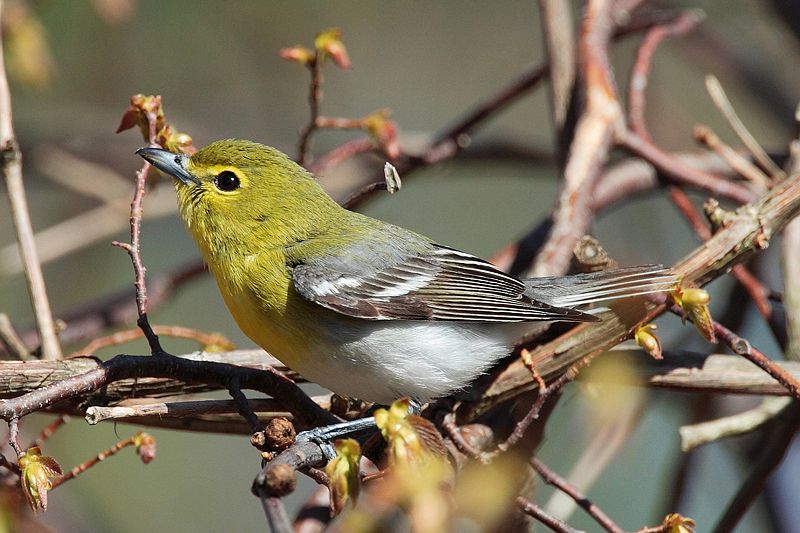
Vireonidae birds are a family of passerine birds found in the New World, Southeast Asia and other tropical regions.
They have dull plumage with greenish coloration and typically measure between small to medium sizes.
These migratory birds were so named by Latin referring to the female golden oriole or even European greenfinch.
Vireo species can be seen perching on branches while they feed mainly on insects such as caterpillars, beetles, grasshoppers and cicadas among others; some also eat fruits which provide them with essential nutrients for their diet.
As well as being known for their musical chirpings during mating season these colourful little creatures make wonderful additions to any garden.Scientific classification:
| Kingdom | Animalia |
| Phylum | Chordata |
| Class | Aves |
| Order | Passeriformes |
| Superfamily | Orioloidea |
| Family | Vireonidae Swainson, 1837 |
Also Featured In: Birds of Morocco, Common Denmark Birds
28. Rhinoceros Hornbill
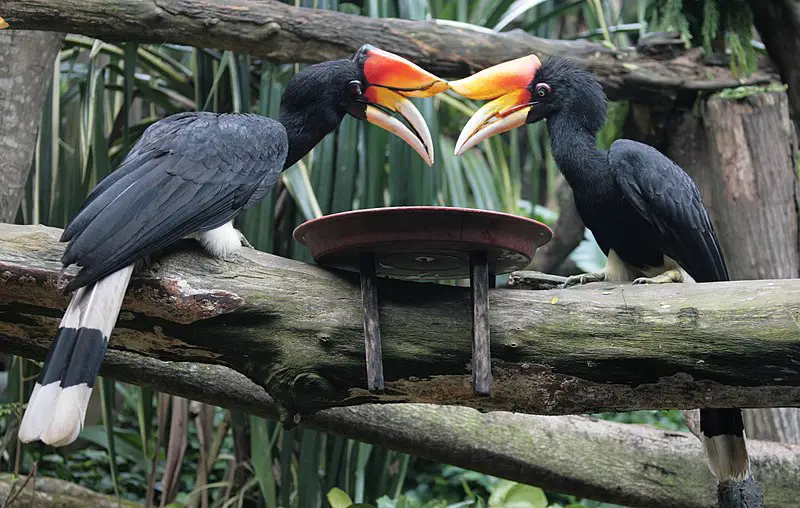
The Rhinoceros Hornbill is an impressive bird, found in various parts of Southeast Asia. It has a large beak which looks like the horn of a rhinoceros and it can reach up to 80 cm long.
They live in lowland, montane tropical and subtropical climates as well as mountain rain forests up to 1,400 metres. This species can live for around 35 years in captivity.
The Rhinoceros Hornbill is also the state bird of Malaysia where its population is most abundant.
Due to deforestation practices however, their habitats are increasingly under threat and thus these birds are becoming rarer by the day despite being protected by law across many countries they inhabit.Scientific classification:
| Kingdom | Animalia |
| Phylum | Chordata |
| Class | Aves |
| Order | Bucerotiformes |
| Family | Bucerotidae |
| Genus | Buceros |
| Species | B. rhinoceros |
Also Featured In: Beautiful Malaysian birds,
29. Eurylaimidae
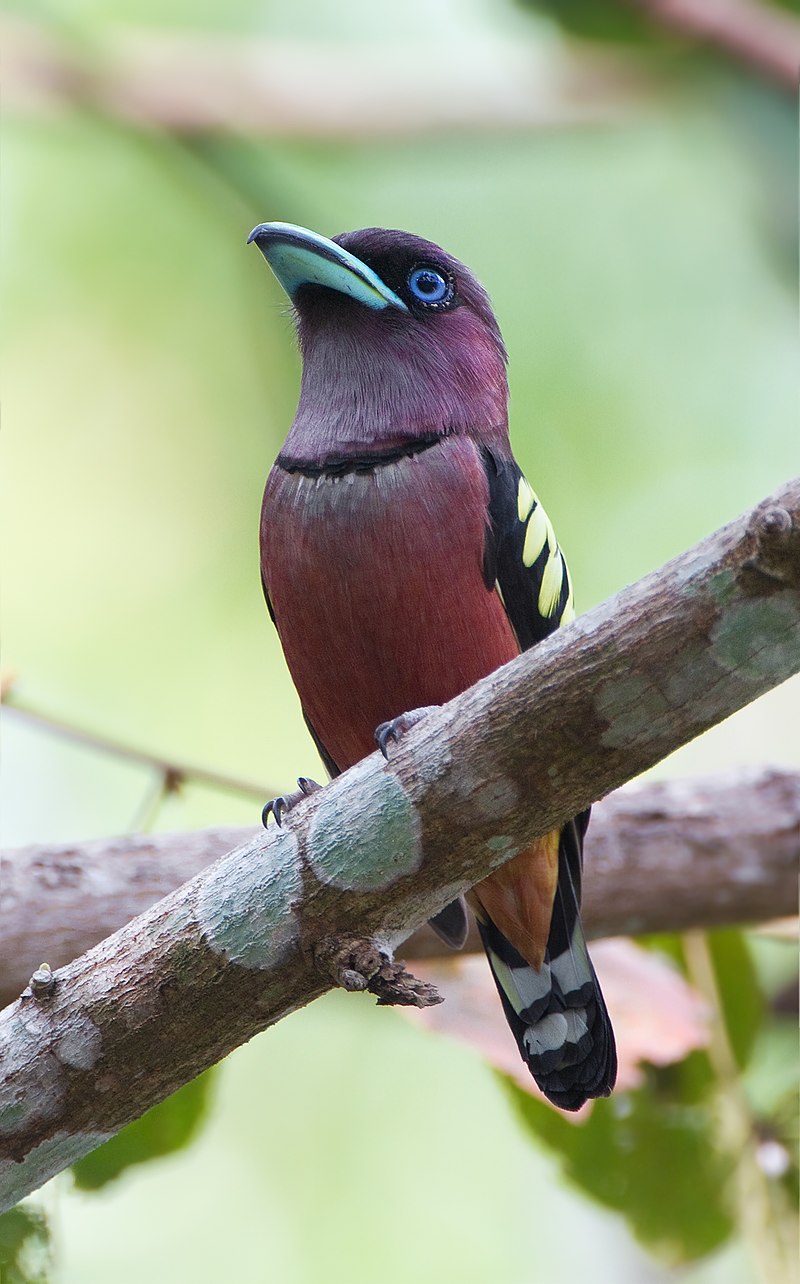
The Eurylaimidae family of birds is a diverse group, found in the eastern Himalayas all the way to Indonesia and Philippines.
They are suboscine passerines that have been known for their bright colours and broad heads.
Majority of these species live in tropical forests or wetlands, where they feed on small invertebrates like insects and worms.
Some specific species such as drongos use mimicry calls to communicate with other animals while most eurylaimids sing beautiful songs during mating season or territorial disputes.
In addition, many members of this family can actively hunt prey using aerial manoeuvres which make them interesting study subjects for ornithologists around the world.Scientific classification:
| Kingdom | Animalia |
| Phylum | Chordata |
| Class | Aves |
| Order | Passeriformes |
| Superfamily | Eurylaimoidea |
| Family | Eurylaimidae Lesson, 1831 |
30. Striated Heron
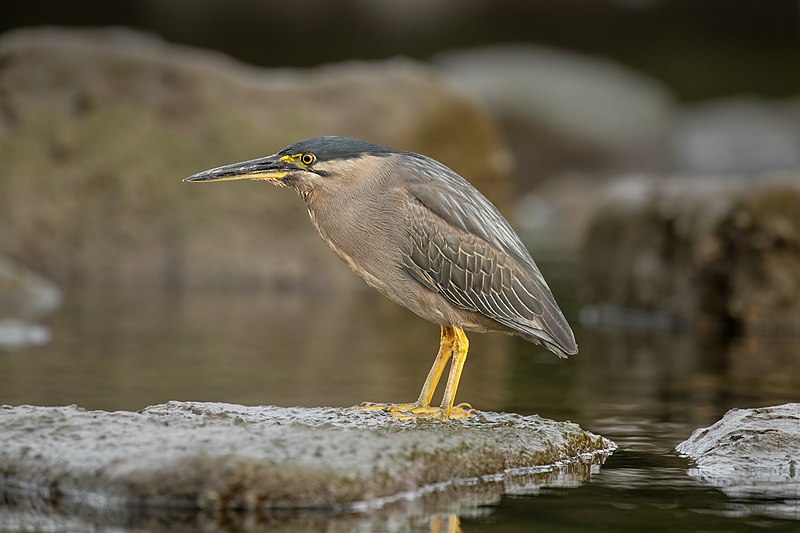
Striated herons are a small species of heron, measuring around 44cm tall. They can be found in wetland areas across the Old World tropics, from west Africa to Japan and Australia as well as South America and the Caribbean.
Striated herons have some interesting behavioral traits that make them unique; they’re mostly sedentary birds who tend to stay close to their breeding habitats throughout most of the year.
During breeding season these little green-backed herons become more active, often performing courtship dances in order to attract mates before nesting together on nearby trees or shrubs.Scientific classification:
| Kingdom | Animalia |
| Phylum | Chordata |
| Class | Aves |
| Order | Pelecaniformes |
| Family | Ardeidae |
| Genus | Butorides |
| Species | B. striata |
Also Featured In: Rainforest Birds You Should Know, Birds of Karnataka
31. Cuckooshrike
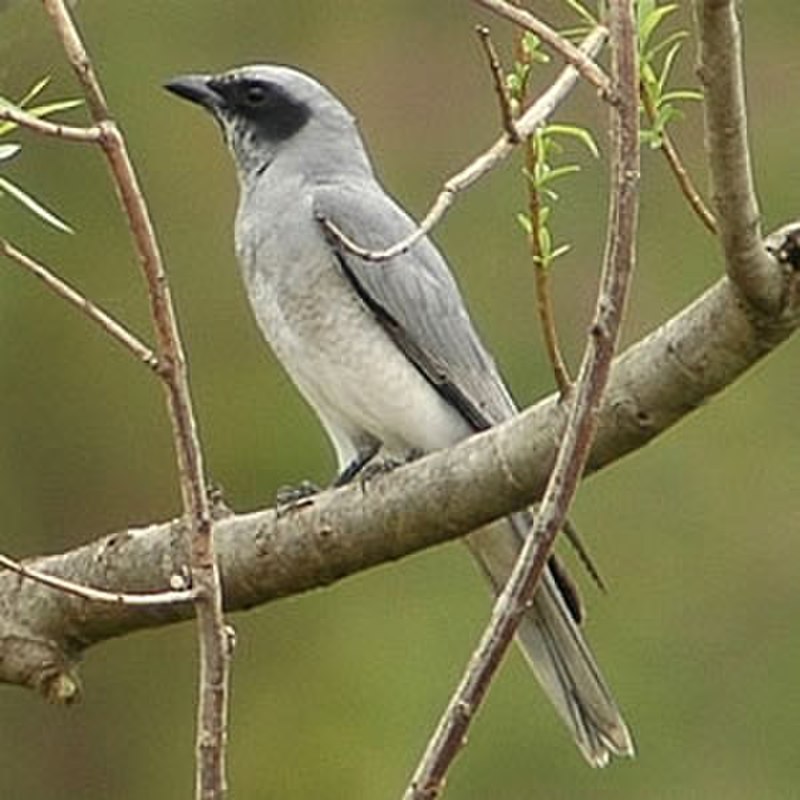
Cuckooshrikes are small to medium-sized passerine birds found mainly in the subtropical and tropical regions of Africa, Asia, and Australasia. They are usually arboreal, feeding on insects or fruit near foliage.
They have a stout bill with long wings and tails that can be used for balancing while perched on branches.
Cuckooshrike plumage is mostly grayish brown but some species may also feature black spots or stripes. The juvenile cuckooshrikes typically show more yellowish coloration than adults do.
These birds form monogamous pairs which often remain together year round defending their territory from other species as well as potential rivals within their own family group.Scientific classification:
| Kingdom | Animalia |
| Phylum | Chordata |
| Class | Aves |
| Order | Passeriformes |
| Infraorder | Corvides |
| Family | Campephagidae Vigors, 1825 |
Also Featured In: Top Birds of Rwanda, South Australian Birds
32. Drongos
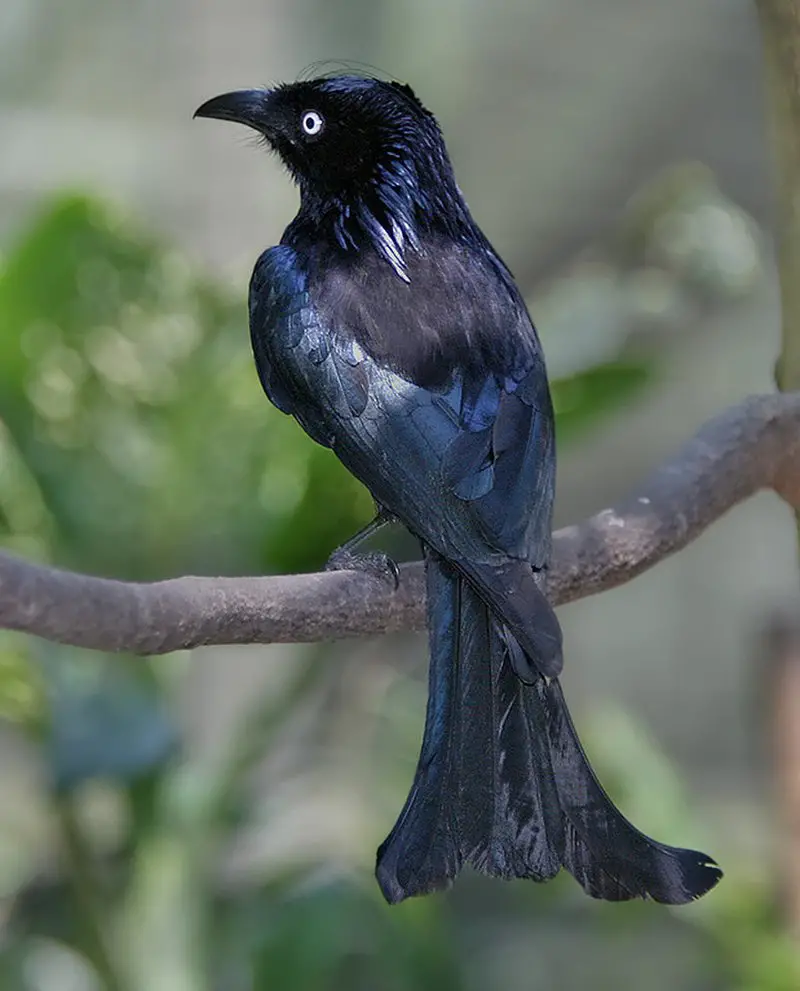
Drongos are an Old World tropical family of passerine birds belonging to the Dicruridae genus.
They have short legs, forked tails and a distinctive upright stance when perched.
Depending on the species they may be mostly black or dark grey in colour with some having elaborate tail decorations.
Drongos feed mainly on insects and small birds – catching them both in flight and from the ground.
They also sometimes eat fruit, nectar and even carcasses.
The drongo’s unique adaptations make it one of nature’s most successful hunters; able to survive almost anywhere in their natural range across Africa, Asia & Australia.Scientific classification:
| Kingdom | Animalia |
| Phylum | Chordata |
| Class | Aves |
| Order | Passeriformes |
| Superfamily | Corvoidea |
| Family | Dicruridae Vigors, 1825 |
| Genus | Dicrurus Vieillot, 1816 |
Also Featured In: Birds of United Arab Emirates, Savanna Birds You Need to See
33. Alpine Accentor
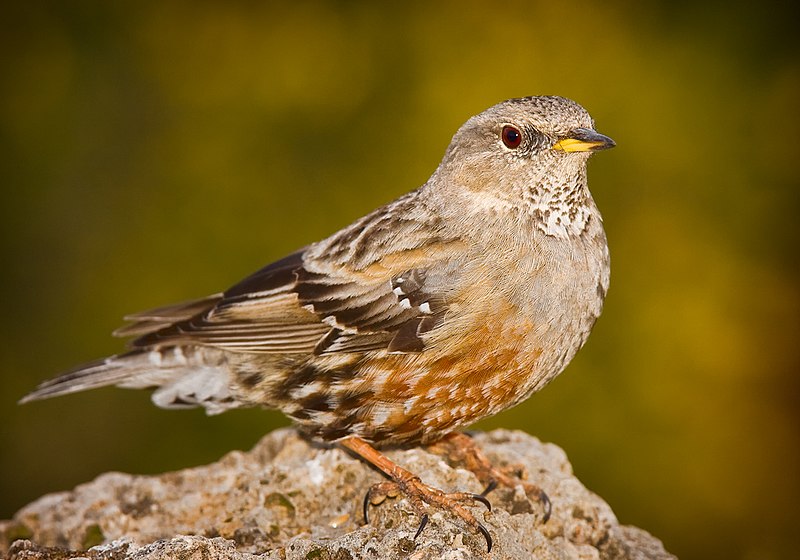
The Alpine Accentor is a small passerine bird belonging to the Prunellidae family. It is native to Eurasia and North Africa, first described by Austria naturalist Giovanni Antonio Scopoli in 1769 with its type locality being Carinthia region of southern Austria.
The species name “collaris” was derived from Latin which means “of a collar” referring to the black line running across their white breast feathers resembling that of a collar.
They are approximately 12-13 cm long and have rounded wings, short tails, thick bill and greyish brown upperparts as well as whitish under parts with yellow tinge on flanks.
They feed primarily on insect larvae found near ground level or other invertebrates such as spiders and worms scattered around alpine meadows where they breed during summer months between May – August before migrating southwards for winter season when food sources become scarce above snowline at higher altitudes.Scientific classification:
| Kingdom | Animalia |
| Phylum | Chordata |
| Class | Aves |
| Order | Passeriformes |
| Family | Prunellidae |
| Genus | Prunella |
| Species | P. collaris |
Also Featured In: Common Birds Found in Switzerland,
34. Lesser Sand Plover
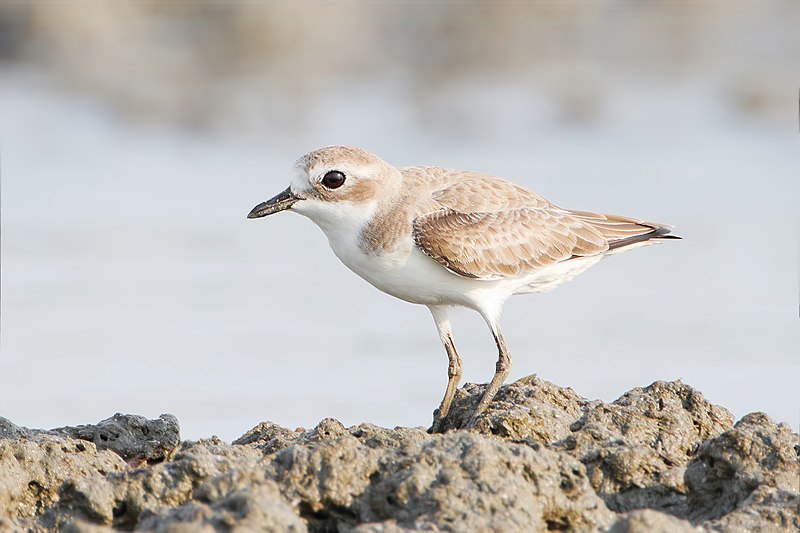
The Lesser Sand Plover is a small wader bird belonging to the plover family. It has yellowish-brown upperparts and white underparts, with a distinct black band across its chest and whitish forehead.
Its wings are short but powerful, allowing it to cover large distances in search of food such as insects, worms or crustaceans found on muddy beaches or shallow lagoons near coasts.
The species prefers habitats with low vegetation like sandy deserts, coastal dunes and salt flats where they can hide among the sand grains while foraging for food during their migrations between Africa and Asia.
These birds form monogamous pairs that breed annually in springtime; nests consist of scrapes made on the ground lined with pebbles or shells carefully arranged by both parents who will vigorously defend them against predators until chicks fledge after about four weeks from hatching.Scientific classification:
| Kingdom | Animalia |
| Phylum | Chordata |
| Class | Aves |
| Order | Charadriiformes |
| Family | Charadriidae |
| Genus | Charadrius |
| Species | C. mongolus |
Also Featured In: Kyrgyzstan Birds, Common Republic of Nauru Birds
35. Red-Throated Thrush
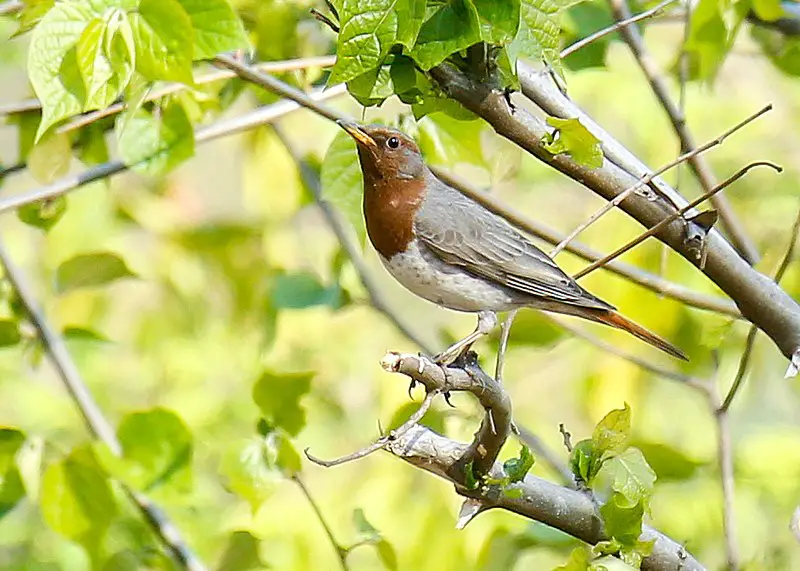
The red-throated thrush is a passerine bird of the thrush family. It has distinctive scarlet feathers on its neck and breast, hence its name.
This species can be found across Europe, Asia and North America and prefers to inhabit open woodlands or scrubby terrain with plenty of undergrowth for sheltering during breeding season.
Red-throated Thrushes are omnivorous birds that feed mainly on insects but also eat berries when available in autumn months.
They often perch high up in trees while searching for food before quickly swooping down onto their prey below them.
Their melodic songs consist of a variety of flute-like whistles which make them especially popular among nature enthusiasts everywhere.Scientific classification:
| Kingdom | Animalia |
| Phylum | Chordata |
| Class | Aves |
| Order | Passeriformes |
| Family | Turdidae |
| Genus | Turdus |
| Species | T. ruficollis |
36. Ring-Necked Pheasant
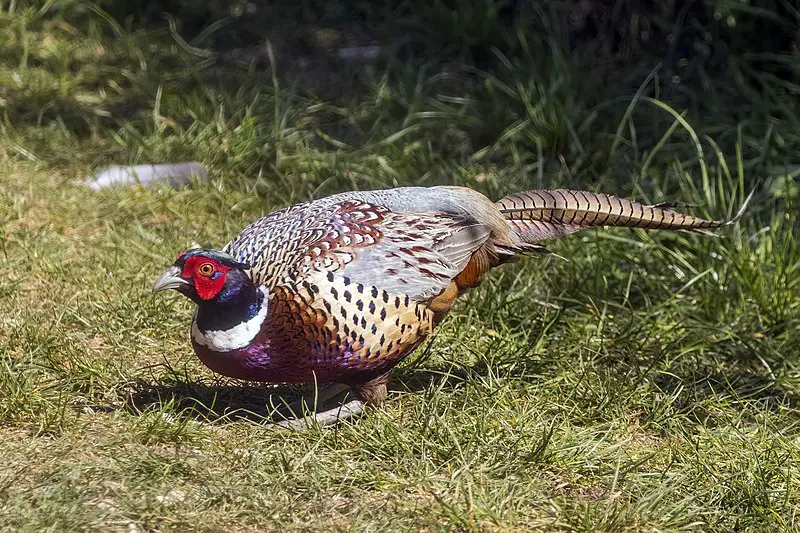
The Ring-necked Pheasant (Phasianus colchicus) is a stunning bird from the pheasant family. It has an iridescent green and gold plumage, with bright red facial wattles and white neck rings that contrast against its black tail feathers.
This elegant species can be found in fields, meadows, woodlands and open areas across Northern Europe to East Asia where it feeds on grain, insects and other small animals. The male displays spectacular courtship rituals to attract mates.
He spreads his wings wide while making loud calls as a sign of dominance which helps him establish territories for breeding season.
Despite being hunted for both food by humans or predators like foxes and cats this magnificent creature remains one of nature’s most beautiful sights.Scientific classification:
| Kingdom | Animalia |
| Phylum | Chordata |
| Class | Aves |
| Order | Galliformes |
| Family | Phasianidae |
| Genus | Phasianus |
| Species | P. colchicus |
Also Featured In: birds of South Dakota, Most Common Romanian Birds
37. Pine Bunting
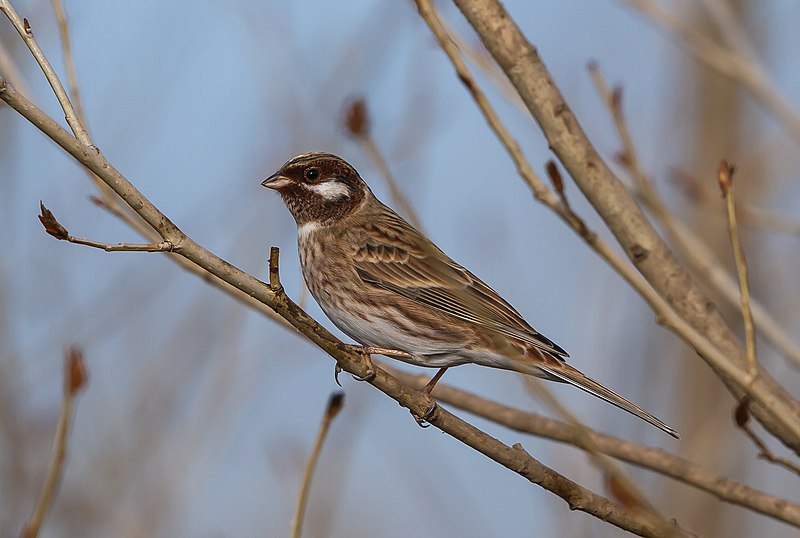
The Pine bunting is a strong passerine bird that belongs to the bunting family Emberizidae. It is found in Eurosiberia, specifically in areas east of the Urals.
The Emberiza genus name is derived from Old German Embritz, which means bunting.
Meanwhile, its specific name, leucocephalos, originated from Ancient Greek leukos, which means “white,” and kephalos, which means “headed.” The Pine bunting is considered robust and hardy.Scientific classification:
| Kingdom | Animalia |
| Phylum | Chordata |
| Class | Aves |
| Order | Passeriformes |
| Family | Emberizidae |
| Genus | Emberiza |
| Species | E. leucocephalos |
Also Featured In: Common Uzbekistan Birds,
38. Old World Babbler
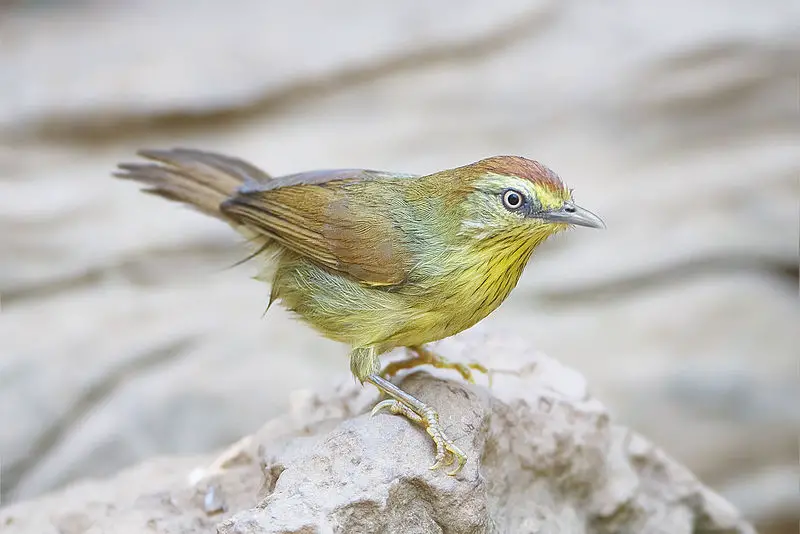
The Old World babbler bird is a passerine bird characterized by soft and fluffy plumage, with diverse size and coloration.
They are commonly found in tropical regions, particularly in Southeast Asia and the Indian subcontinent.
The Old World babblers are one of two groups known as babblers, with the other being the Australasian babblers.
These birds have a unique appearance and create a charming atmosphere with their soft, mellow sound.
They live in a wide range of environments from forests to gardens and thrive on insects and fruits.
Old World babblers are typically social birds that often travel in groups, with some even engaging in communal living.
Despite their somewhat small size, these birds are beloved among birdwatchers, and many people enjoy observing them in their natural habitats.Scientific classification:
| Kingdom | Animalia |
| Phylum | Chordata |
| Class | Aves |
| Order | Passeriformes |
| Superfamily | Sylvioidea |
| Family | Timaliidae Vigors & Horsfield, 1827 |
Also Featured In: Most Common Taiwan Birds, Birds that Live in Borneo Island
39. Chicken
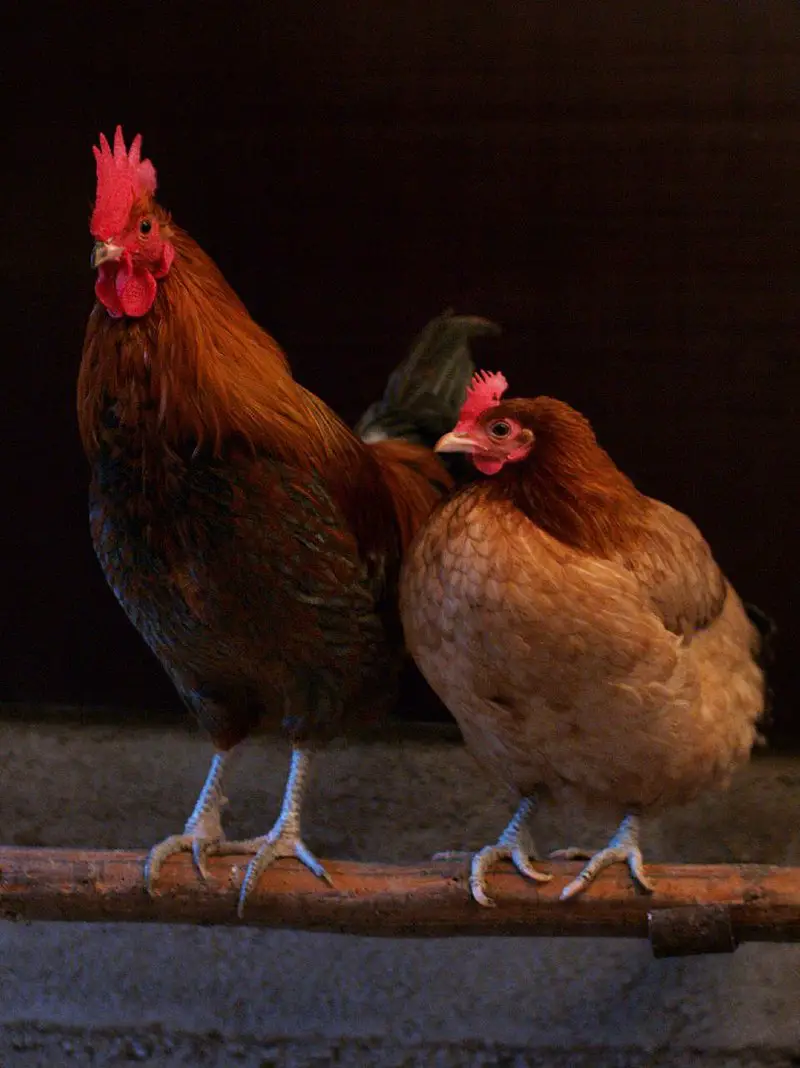
The chicken, a commonly domesticated species, originates from Southeast Asia and exhibits traits of wild grey and Ceylon junglefowl. Adult male birds are referred to as roosters or cocks, while a younger male is called a cockerel.
A castrated male is called a capon. Adult female chickens are known as hens, and sexually immature females are known as pullets.
Chickens are known for their ability to lay eggs and are often raised for meat consumption. They come in a variety of breeds and can have different colors and patterns on their feathers.
Chickens are also popular as pets and often require a coop or enclosure for proper care.Scientific classification:
| Kingdom | Animalia |
| Phylum | Chordata |
| Class | Aves |
| Order | Galliformes |
| Family | Phasianidae |
| Genus | Gallus |
| Species | G. gallus |
| Subspecies | G. g. domesticus |
Also Featured In: Birds that are Used in Feng Shui, Birds of Symbolism
40. Black Shama
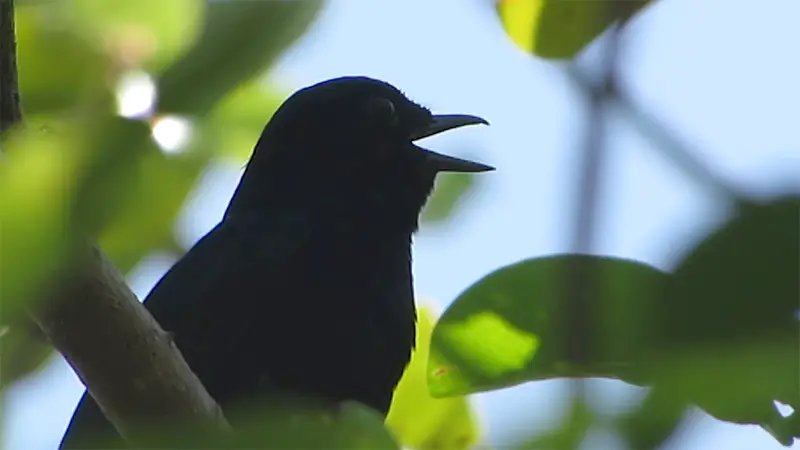
The Black shama, also known as “Siloy” to locals in the Philippines, is a bird that belongs to the Muscicapidae family. It can only be found on the island of Cebu, and is renowned for its beautiful black plumage.
This species is commonly found in subtropical or tropical moist lowland forests, as well as in shrublands and plantations.
They have been spotted in various locations across the island, with some locations being of particular importance.
Despite being endemic to Cebu, the Black shama is currently classified as “Vulnerable” on the IUCN Red List, largely due to the loss and degradation of their natural habitats.Scientific classification:
| Kingdom | Animalia |
| Phylum | Chordata |
| Class | Aves |
| Order | Passeriformes |
| Family | Muscicapidae |
| Genus | Copsychus |
| Species | C. cebuensis |
Also Featured In: Common Philippines Birds,
41. Whistling Thrush
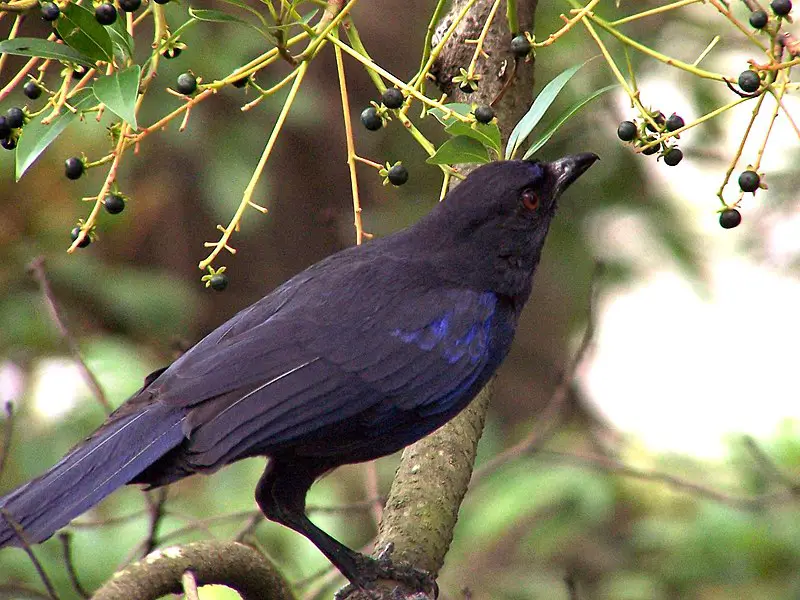
Whistling thrushes are medium-sized birds that belong to the Old World flycatcher family. They are mostly insectivorous or omnivorous and are brightly coloured.
These birds can be found in India and southeast Asia. The males are usually blue, while the females can either be similar to the male or brown in colour.
They have brightly coloured patches on their shoulders and sometimes on their belly.
The song of the Whistling thrush is loud and melodious and can be heard from a considerable distance.
These birds are an important part of the ecosystem, and their diet mostly comprises insects, which helps in controlling the pest population.
They are also known for their playful behaviour and can be seen hopping around rocks and pebbles near streams and rivers.
The Whistling thrush is a beautiful bird that is revered all over the world for its striking appearance and sweet songs.Scientific classification:
| Kingdom | Animalia |
| Phylum | Chordata |
| Class | Aves |
| Order | Passeriformes |
| Family | Muscicapidae |
| Subfamily | Saxicolinae |
| Genus | Myophonus Temminck, 1822 |
Also Featured In: Endemic Sri Lanka Birds,
42. Asian Thrush
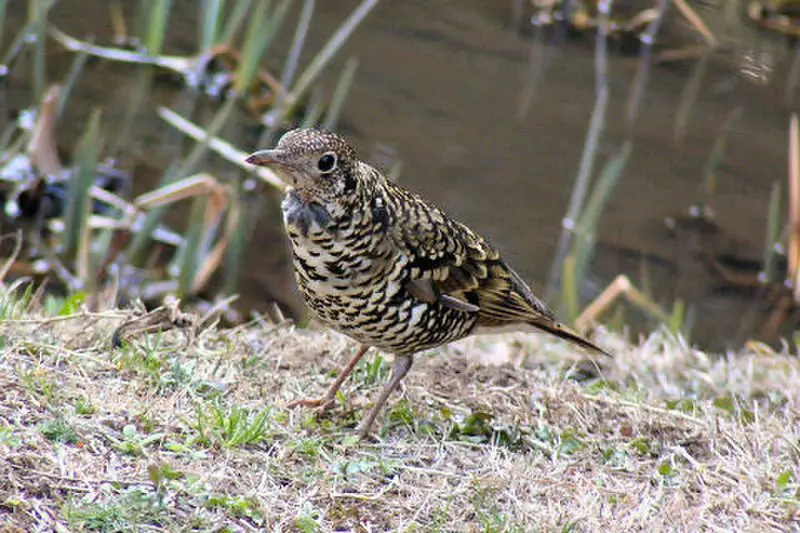
The Asian thrush bird belongs to the genus Zoothera in the Turdidae family, and is primarily insectivorous or omnivorous.
Its name is derived from the Greek words for “animal” and “hunter.” Two New World species that were traditionally categorized as Zoothera are now known to belong elsewhere in the thrush family.
The Siberian thrush and a number of other species also fall under the Zoothera classification.
Overall, the Asian thrush is a medium-sized bird that can be found across a range of habitats in Asia. It is a capable hunter and forager, and plays an important role in maintaining healthy ecosystems.Scientific classification:
| Kingdom | Animalia |
| Phylum | Chordata |
| Class | Aves |
| Order | Passeriformes |
| Family | Turdidae |
| Genus | Zoothera Vigors, 1832 |
43. Brachypteryx
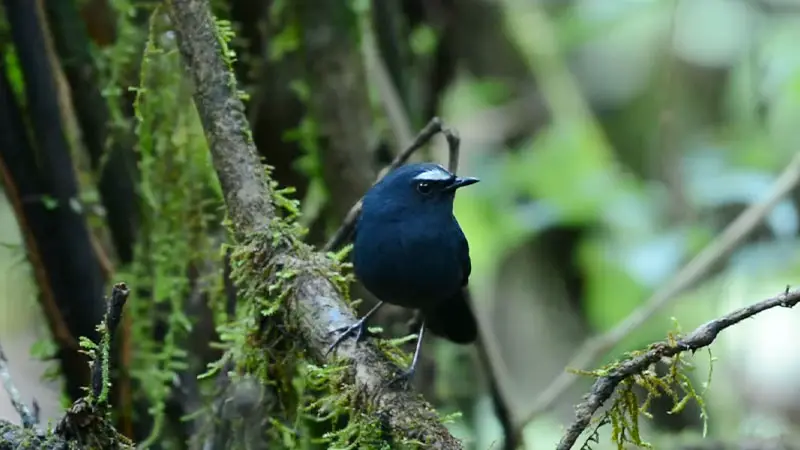
Brachypteryx is a genus of passerine birds found in southeast Asia. These birds are known as shortwings due to their short rounded wings and tails. They have long legs and finely pointed bills.
Shortwings are shy and elusive ground-dwellers preferring the cover of dense undergrowth. The genus was introduced by an American naturalist. There are ten species of shortwings in the Brachypteryx genus.
These birds live in lush forests and are mainly insectivorous. They are beautiful birds with muted plumage, often brown and grey. Some species have beautiful blue or rust-colored patches on their wings.
Brachypteryx birds are known for their song, which is often melodious and includes a series of chirps, squeaks and whistles.Scientific classification:
| Kingdom | Animalia |
| Phylum | Chordata |
| Class | Aves |
| Order | Passeriformes |
| Family | Muscicapidae |
| Subfamily | Saxicolinae |
| Genus | Brachypteryx Horsfield, 1821 |
44. Olive-Backed Pipit
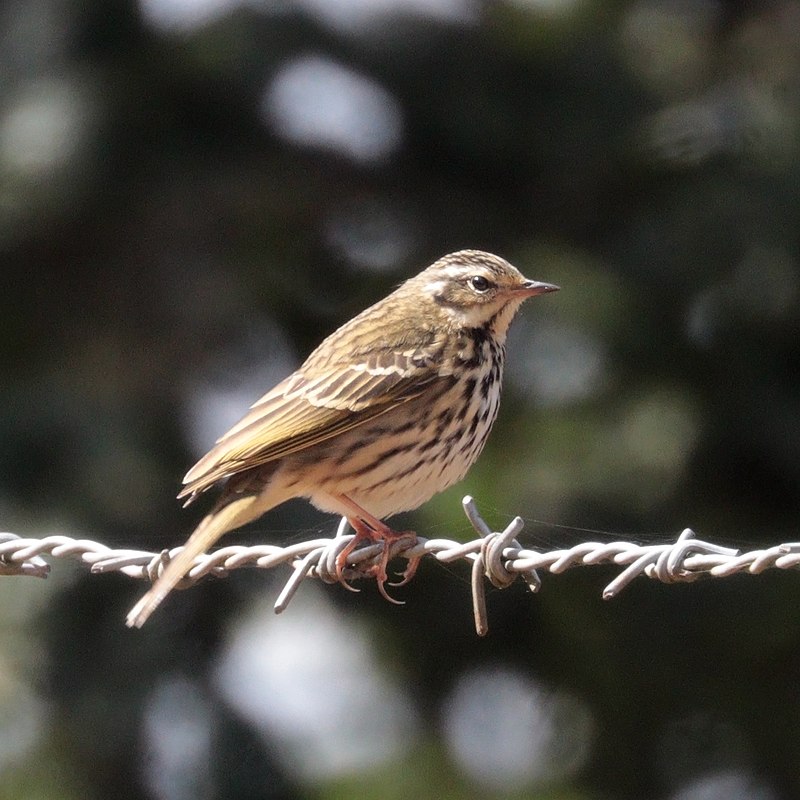
The Olive-backed Pipit is a tiny bird belonging to the Pipit genus that breeds in southern, north central and eastern Asia, as well as northeastern European Russia.
It migrates long distances during winters, flying to southern Asia and Indonesia. Often called Indian Pipit, Hodgson’s Pipit, or Tree Pipit, it resembles the latter in appearance.
This species is popularly known for its olive-green back and streaked chest. The Olive-backed Pipit makes its nests in grassy areas or bushes, and lays 2-6 eggs at a time. It feeds on insects, seeds, and small invertebrates.
Due to habitat loss and degradation, this species is listed as a “Least Concern” by the International Union for Conservation of Nature.Scientific classification:
| Kingdom | Animalia |
| Phylum | Chordata |
| Class | Aves |
| Order | Passeriformes |
| Family | Motacillidae |
| Genus | Anthus |
| Species | A. hodgsoni |
Also Featured In: Common Birds of Sapporo,
45. House Martins
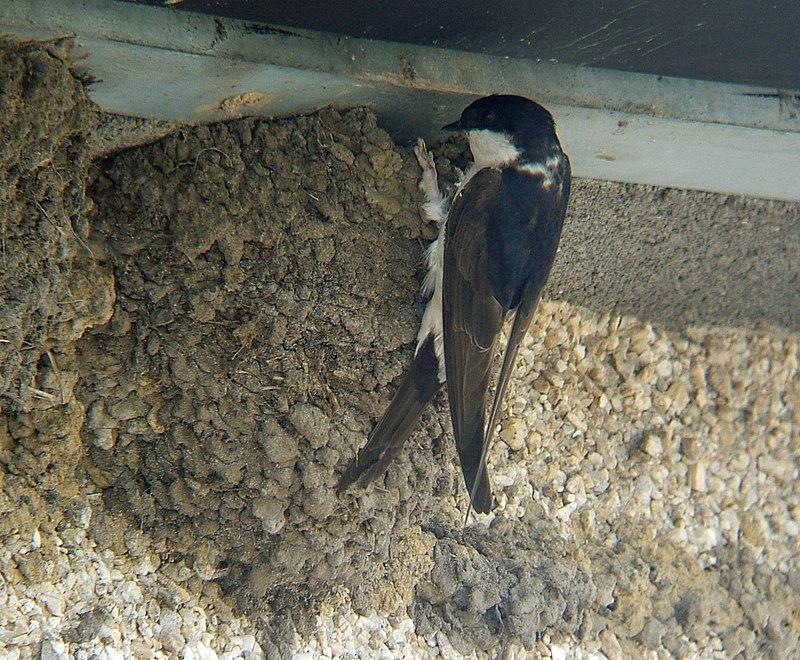
House martins are small passerine birds that belong to the swallow family. They have a distinct appearance, with a blackish-blue upper body and a white rump, along with white or gray underparts.
Their short tails, chunky build, and bull-headed appearance make them easy to identify. One characteristic that sets them apart from other swallows is the feathering on their toes and tarsi.
House martins are known for building intricate nests using mud, which they attach to the exterior walls of buildings.
They are migratory birds that spend the summer breeding season in the Northern Hemisphere, then fly south for the winter.
The genus Delichon includes four species of house martins found across Europe and Asia, but they are most commonly seen in urban and suburban areas where they nest on buildings.Scientific classification:
| Kingdom | Animalia |
| Phylum | Chordata |
| Class | Aves |
| Order | Passeriformes |
| Family | Hirundinidae |
| Subfamily | Hirundininae |
| Genus | Delichon F. Moore, 1854 |
46. Godlewski’s Bunting
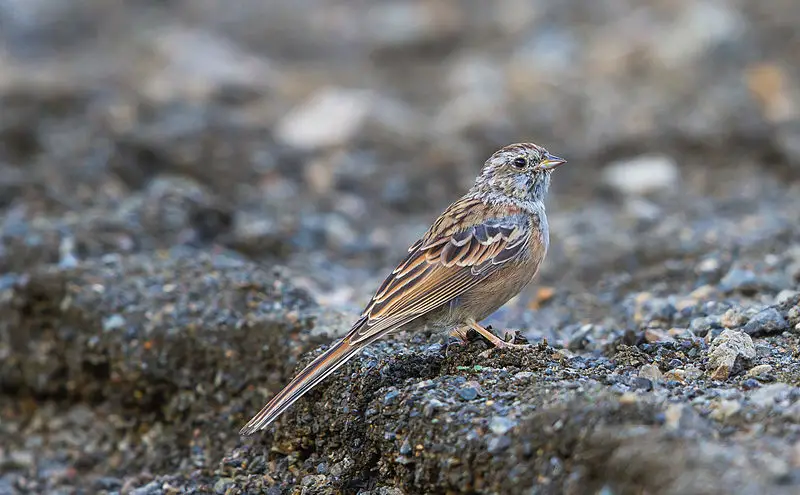
Godlewski’s bunting is a type of bird that belongs to the Emberizidae family. It is named in honor of the Polish collector, Victor Godlewski, who collected a specimen used to describe the bird by Taczanowski.
This bird species can be found in several countries, including China, Pakistan, India, Kazakhstan, Mongolia, Myanmar, and Russia.
The adult Godlewski’s bunting has a gray head, neck, and breast, and black or brown eye stripes.
This bird is small in size and has a distinctive appearance due to its unique coloration. It is a beautiful bird that is admired by bird watchers around the world for its unique features and characteristics.
In conclusion, Godlewski’s bunting is a fascinating bird species that is worth studying and appreciating.Scientific classification:
| Kingdom | Animalia |
| Phylum | Chordata |
| Class | Aves |
| Order | Passeriformes |
| Family | Emberizidae |
| Genus | Emberiza |
| Species | E. godlewskii |
47. Eumyias
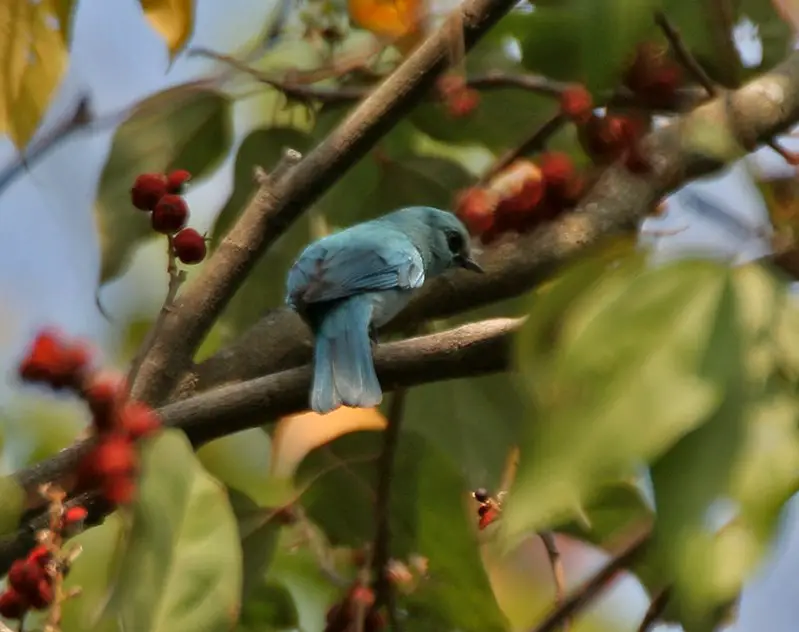
Eumyias is a group of birds that belong to the family Muscicapidae. This genus comprises 11 species of birds found in the Old World.
One of the species, the Buru jungle flycatcher, was earlier recognized as a member of the Rhinomyias genus.
However, it was later shifted to Eumyias after a molecular phylogenetic study. This study declared that Rhinomyias was polyphyletic.
These birds have distinct characteristics and features that differentiate them from other species in the Muscicapidae family.
They have unique plumage and are common in many parts of the world. The Eumyias birds are fascinating creatures, and their study can provide valuable insights into the world of avian biology.Scientific classification:
| Kingdom | Animalia |
| Phylum | Chordata |
| Class | Aves |
| Order | Passeriformes |
| Family | Muscicapidae |
| Genus | Eumyias Cabanis, 1851 |
48. Niltava
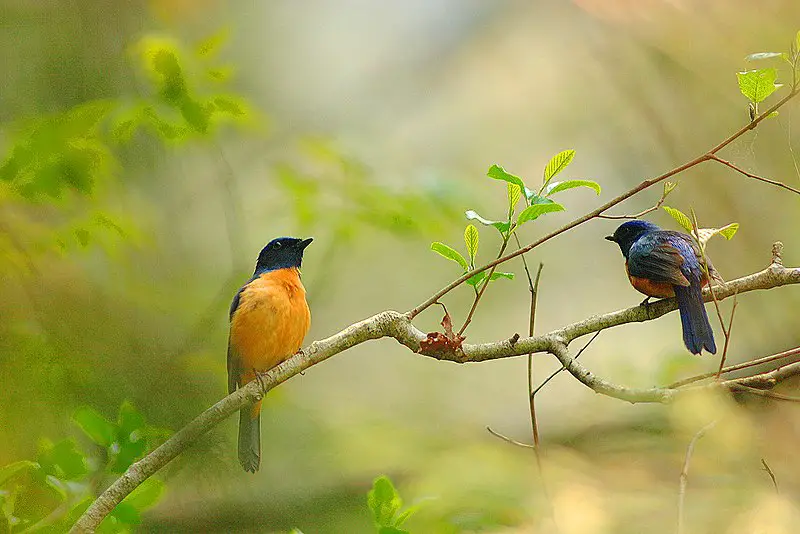
Niltava is a genus of passerine birds found in the Old World flycatcher family Muscicapidae. They are commonly known as Niltau and named after their most attractive species N. sundara.
The genus comprises seven species of birds, each with its distinct features. Niltava birds are known for their vibrant colors and unique tail feathers.
They are predominantly found in the Himalayan region and are known for their distinct vocalizations.
These birds are particularly small in size, making them vulnerable to predation. Niltava birds have been extensively studied due to their biological and behavioral adaptations, including their feeding habits and breeding behaviors.
Efforts are being made to conserve these birds in their natural habitats, which are being threatened by increasing human activity and climate change.Scientific classification:
| Kingdom | Animalia |
| Phylum | Chordata |
| Class | Aves |
| Order | Passeriformes |
| Family | Muscicapidae |
| Genus | Niltava Hodgson, 1837 |
49. Tarsiger
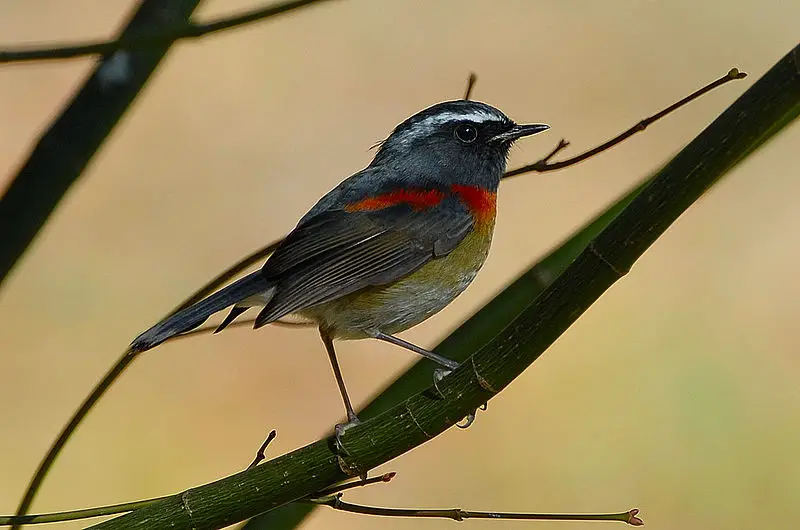
Tarsiger is a small genus of beautifully coloured birds that belong to the Muscicapidae family. These birds are found predominantly in Asia, with only one species inhabiting northeastern Europe.
Four of the six species of Tarsiger are native to the Sino-Himalayan mountain system. It is said that they feed mainly on insects.
While this genus has been considered to be part of the Luscinia genus, further research suggests that Tarsiger birds have unique monophyletic characteristics.
Overall, Tarsiger birds are known for their vibrant coloring and small size, making them a unique and fascinating genus of birds.Scientific classification:
| Kingdom | Animalia |
| Phylum | Chordata |
| Class | Aves |
| Order | Passeriformes |
| Family | Muscicapidae |
| Subfamily | Saxicolinae |
| Genus | Tarsiger Hodgson, 1845 |
50. Forktail
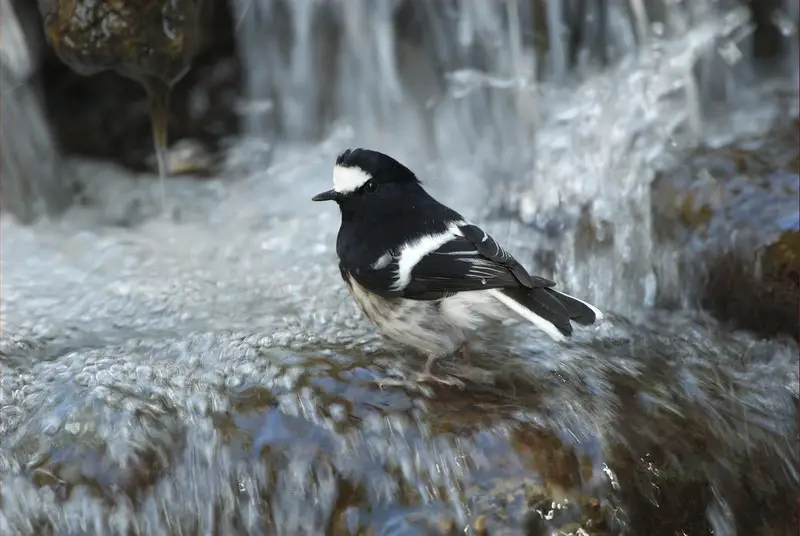
Forktail birds are small insect-eating birds that can be found in Southeast Asian forests, particularly in mountain forests and near streams.
They were previously grouped with thrushes but are now commonly classified under the Old World flycatcher family.
The bird’s most distinguishing feature is its long, forked tail, which gives the species its name. These birds typically nest in rock crevices and lay between two and four eggs.Scientific classification:
| Kingdom | Animalia |
| Phylum | Chordata |
| Class | Aves |
| Order | Passeriformes |
| Family | Muscicapidae |
| Subfamily | Saxicolinae |
| Genus | Enicurus Temminck, 1822 |
51. Iora
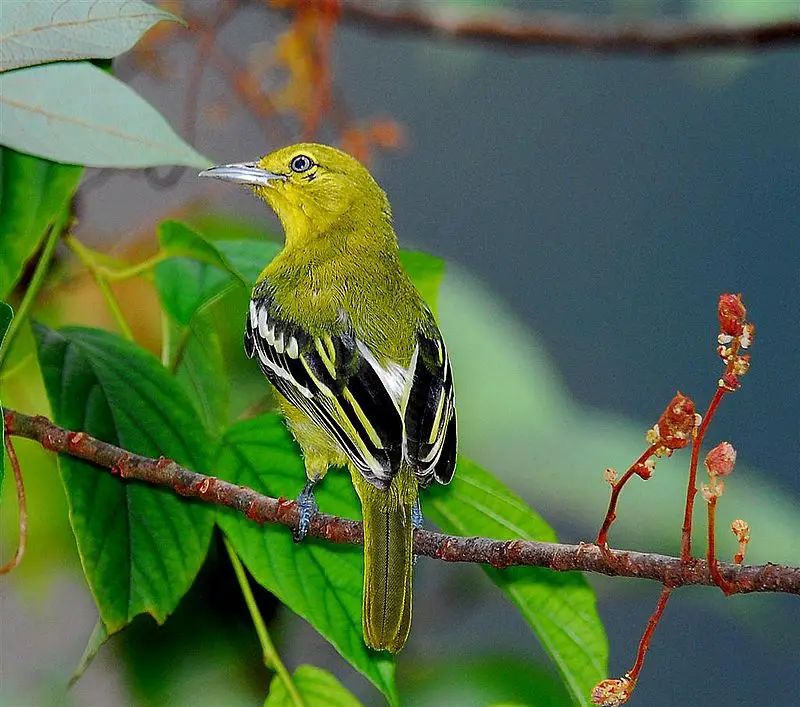
The iora is a small bird species found in south and southeast Asia. It belongs to the family Aegithinidae, which encompasses only this single genus, Aegithina.
This bird was formerly grouped with the leafbirds and fairy-bluebirds, in the family Irenidae.
The common iora was the bird species that prompted the introduction of the genus Aegithina in 1816 by the French ornithologist Louis Jean Pierre Vieillot.
These birds have a unique appearance, with bright green feathers on their upperparts and yellow or white underparts.
They feed on insects and have a distinctive voice that they use to communicate with other ioras.
Despite their small size, they are active and agile in their movements, making them a delight to observe in the wild.Scientific classification:
| Kingdom | Animalia |
| Phylum | Chordata |
| Class | Aves |
| Order | Passeriformes |
| Superfamily | Malaconotoidea |
| Family | Aegithinidae G. R. Gray, 1869 |
| Genus | Aegithina Vieillot, 1816 |
Also Featured In: Common Birds in Kerala, Birds that Live in Tamil Nadu